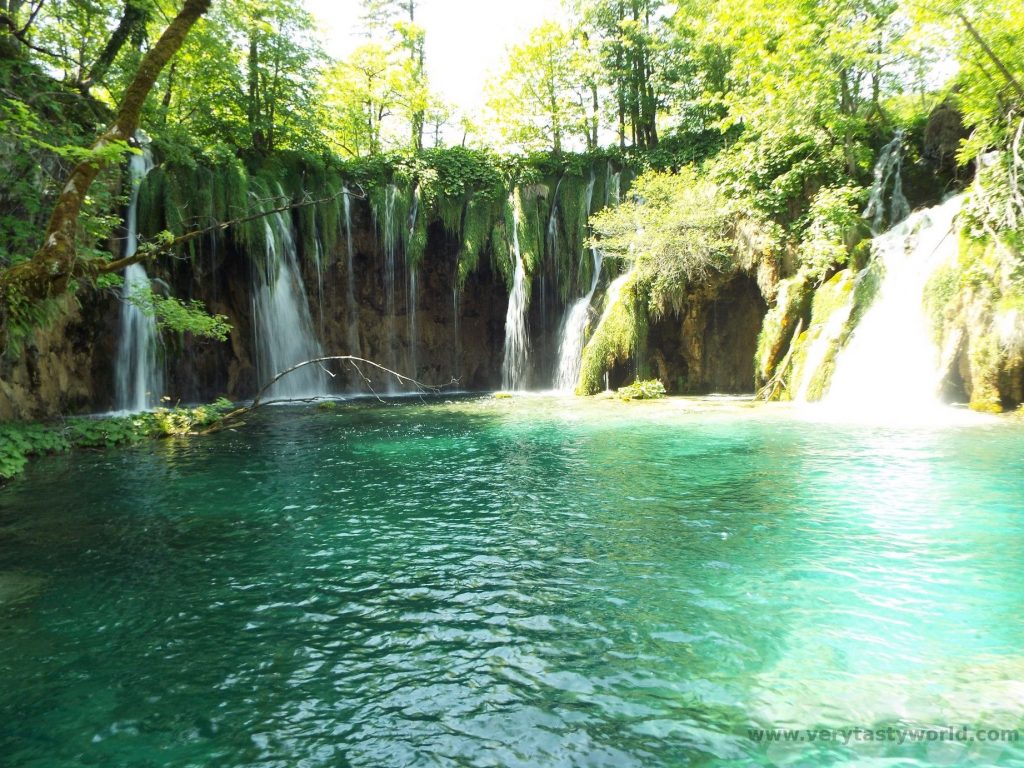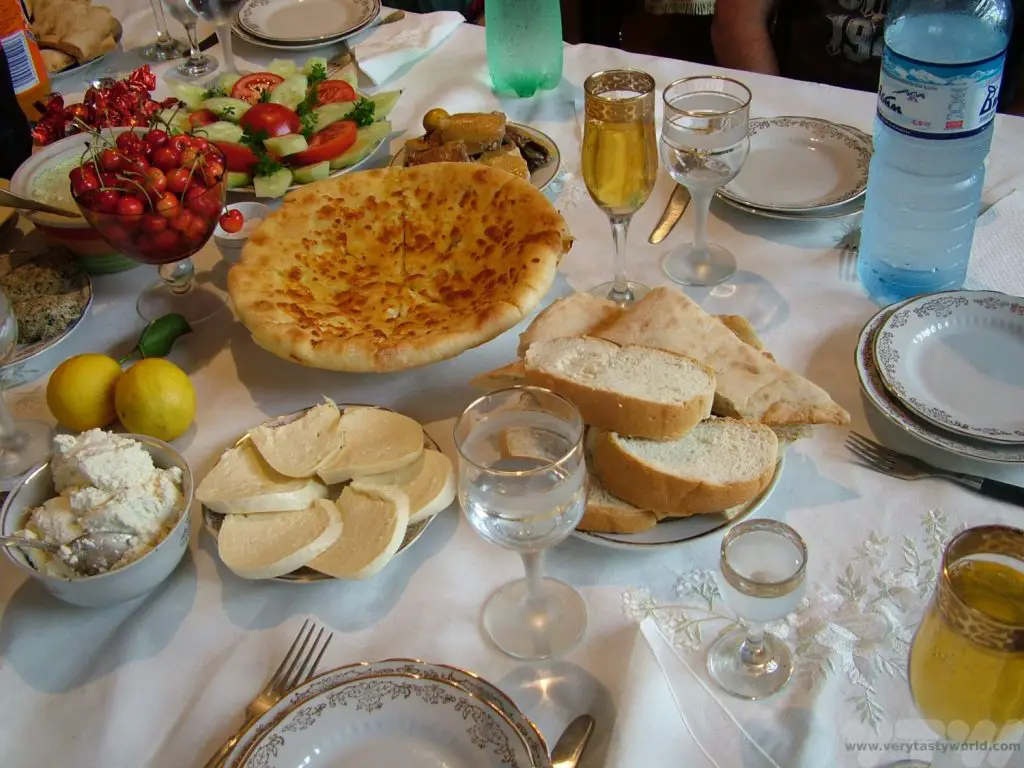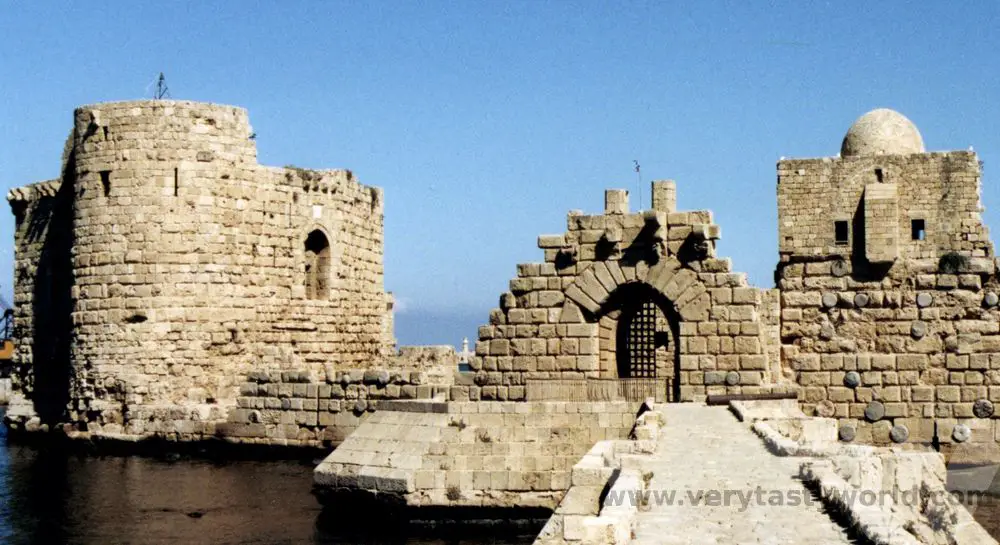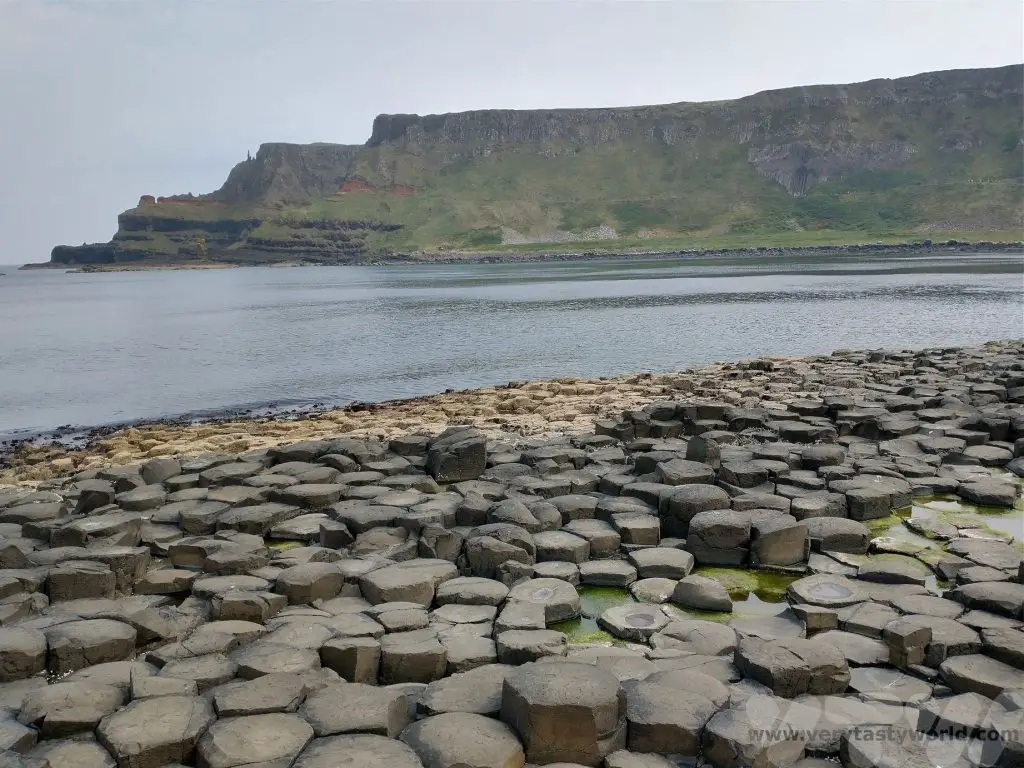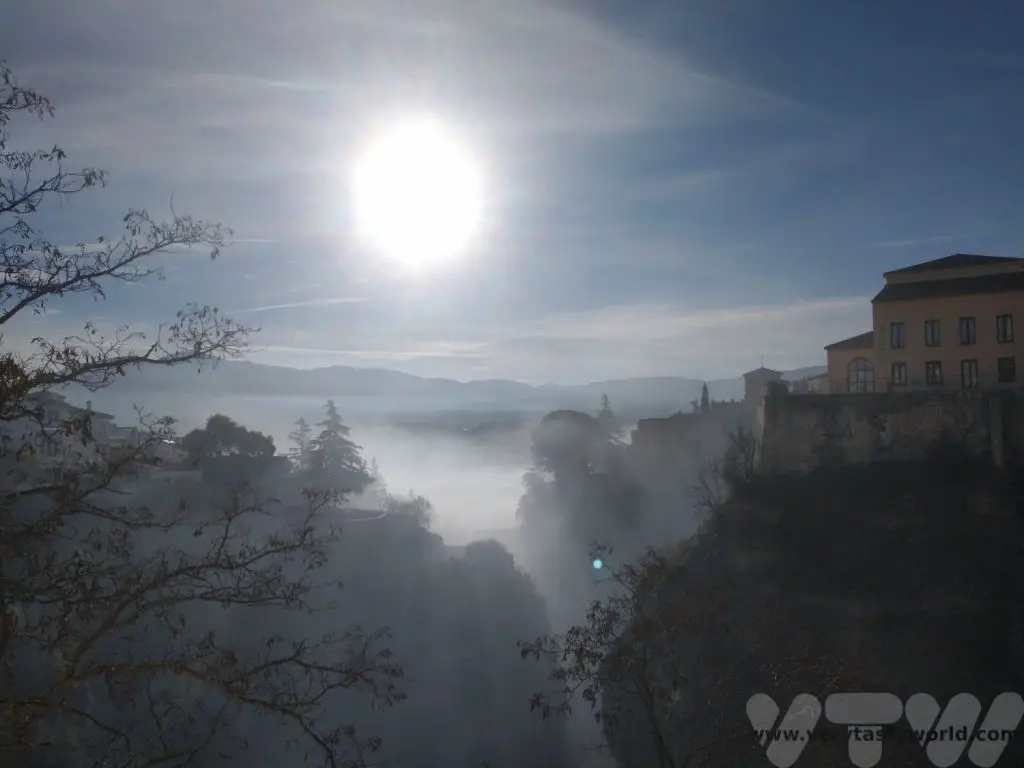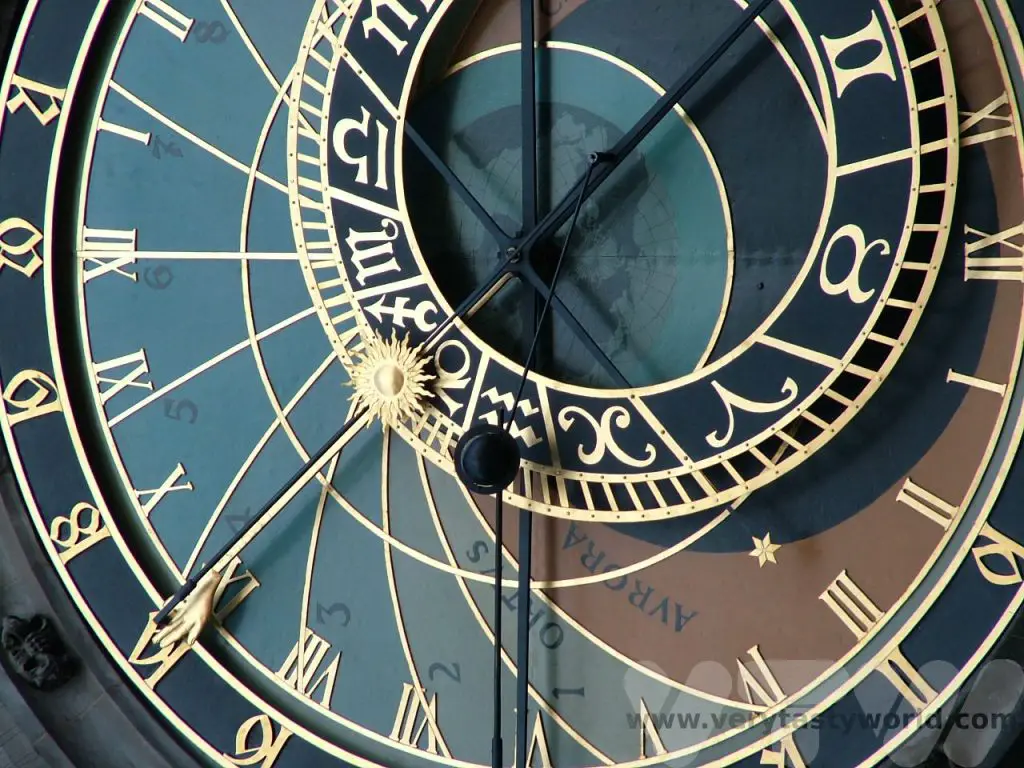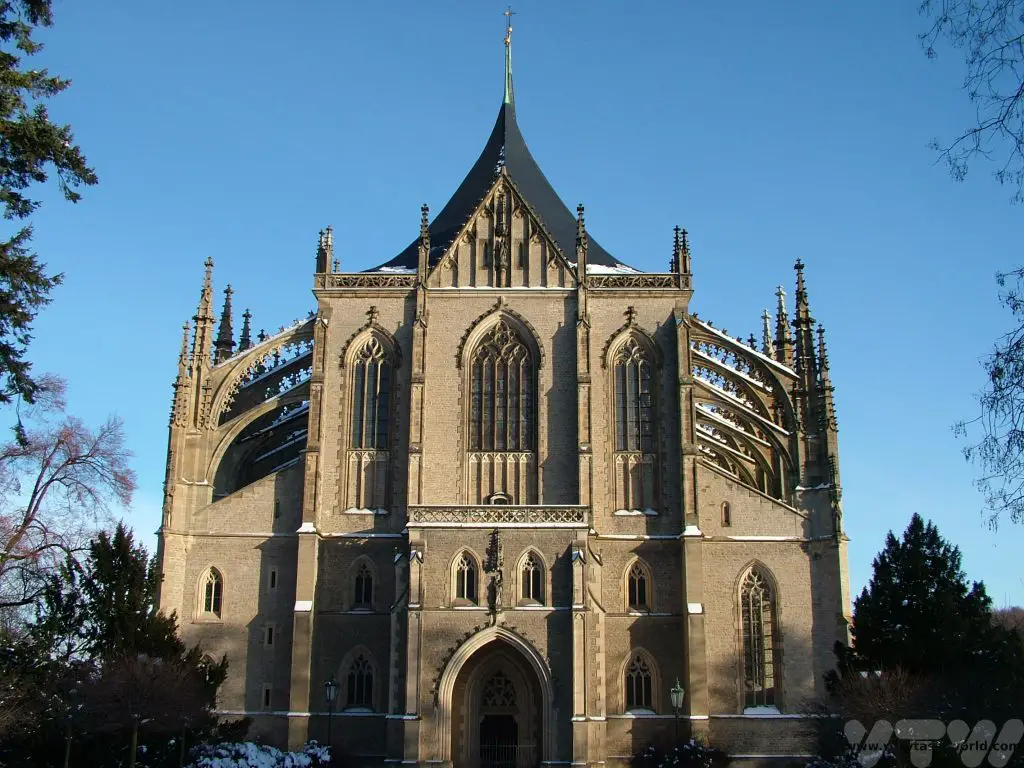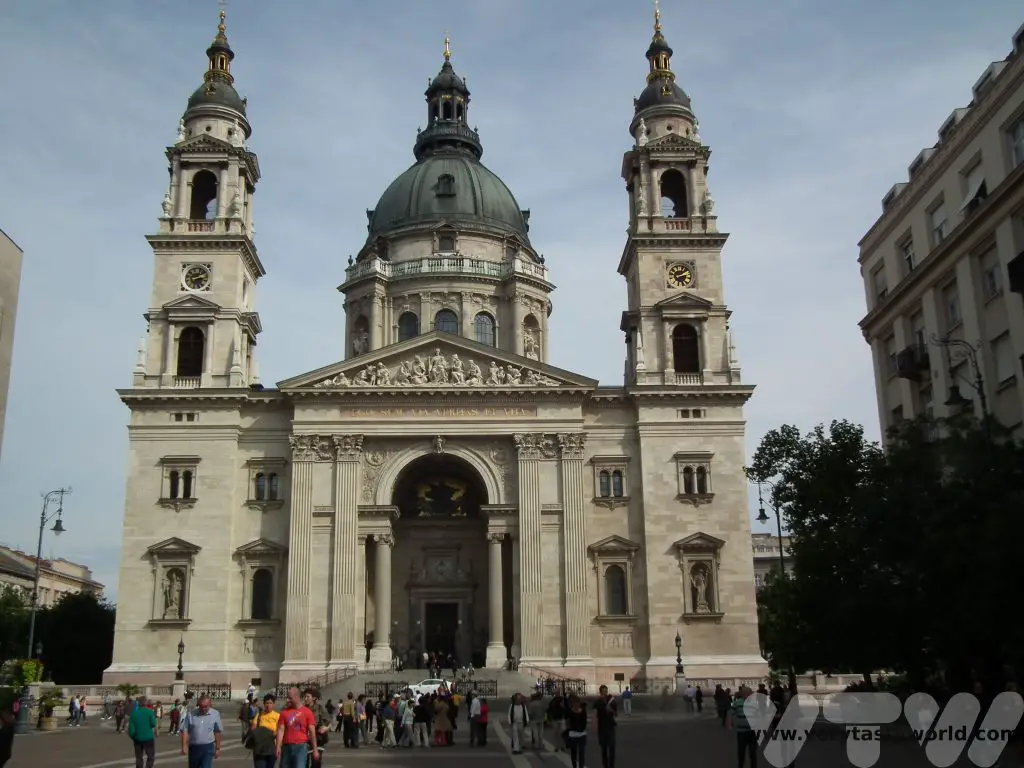Is Sarajevo Worth Visiting?
Sarajevo is the capital of Bosnia and Herzegovina. It is situated inland and lies in the valley of the Miljacka River in the Dinaric Alps. We visited this lively and cosmopolitan city as part of a road trip though Bosnia and Croatia.It takes a couple of hours to reach there from Mostar and an hour or so from Travnik and Konjic. So is Sarajevo worth visiting? The answer is an emphatic yes! It’s a lovely city with a fascinating history as well as plenty of things to see and do.
Driving in Bosnia is generally a pleasure, but is quite slow in the countryside. The closer you get to Sarajevo the wider and faster the roads become. Driving in the city itself isn’t too difficult either, the traffic was busy but not overwhelming, but make sure you have practiced your hill starts if you’re driving a manual transmission car – the suburbs are very hilly and some of roads are quite narrow.
Welcome to Sarajevo
A walking tour is a really good way to discover a new city, it’s a great means of finding your bearings and discovering places to explore in more depth. Local guides are also a useful resource for getting recommendations for places to eat and drink. We spent our first morning on a walking tour with a small group of international visitors who were also keen to discover what Sarajevo had to offer.
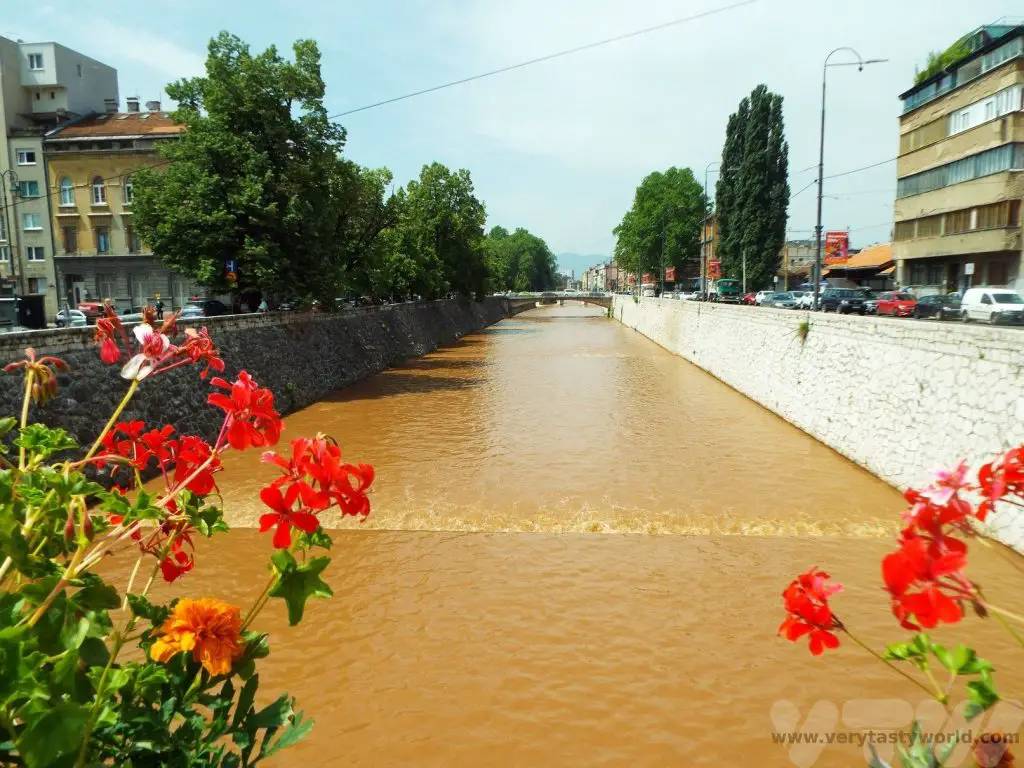
When we first met the guide he asked us, “can you tell me anything about Sarajevo?” Sadly, the only things we could think of were negative – the siege of Sarajevo during the Bosnian War in the 1990s and the shooting of Archduke Franz Ferdinand which led to the commencement of the First World War. Our guide acknowledged that Sarajevo has had more than its fair share of world history, but also that it hosted the Winter Olympics in 1984, which was a positive thing. And he also pointed out that Sarajevo is a hugely multicultural city with a rich history.
Our walking tour started in the old town. On the pavement of Ferhadija there is a plate bearing an inscription:
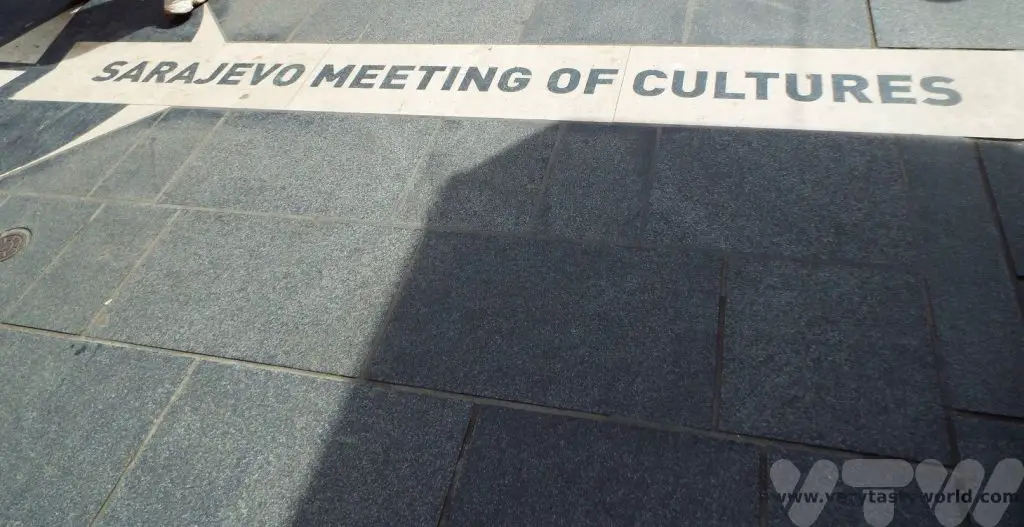
This represents the boundary between the old (Ottoman) and new (Austro-Hungarian) parts of the city. The walk conveniently followed the history of Sarajevo.
Sarajevo’s Ottoman Old Town
Although there had been settlements in the area, Sarajevo as we know it was founded during the Ottoman empire in 1461 by Isa-Beg Ishaković, who constructed a number of buildings including mosques, a market and bath houses.
It was Gazi Husrev-beg, governor of the Sanjak of Bosnia in the mid 16th century, who developed the city and enabled it to thrive. Importantly, he recognised Sarajevo’s strategic importance along trade routes and set up free accommodation for traders passing through the city. It reflected the hospitality of the time but also ensured that the area flourished. The old city has a large covered marketplace and several mosques.
The city’s clock tower was an important building. It tells the time in an unconventional way – when the hands are at midnight this denotes the time of sunset. This would have been an important way for Muslims observing Ramadan to know when they could start eating.
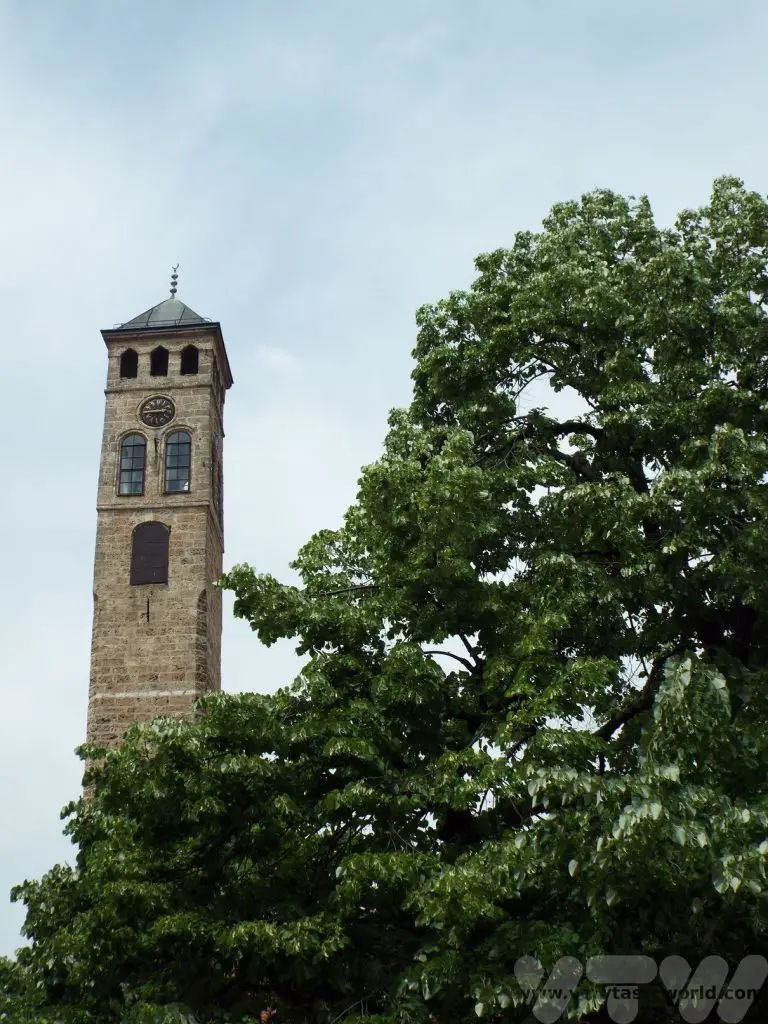
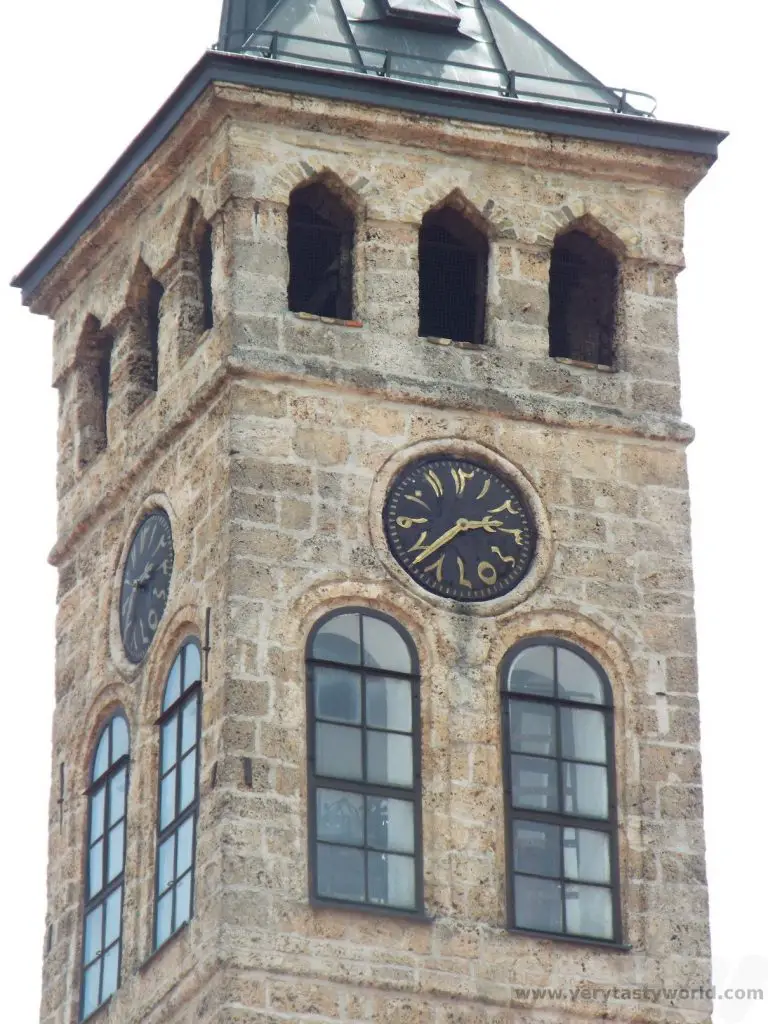
Of course, sunset occurs at a slightly different time every day, so the clock would have had to be changed manually. In addition, Sarajevo is a located in a steep valley, surrounded by mountains and the city has outgrown the clock. These days, a cannon is fired from the Yellow Fortress to mark an audible sunset alert for all Muslims.
Gazi Husrev-beg Mosque is dedicated to the city’s benefactor and was built in 1530. It is an impressive structure, highly decorated.
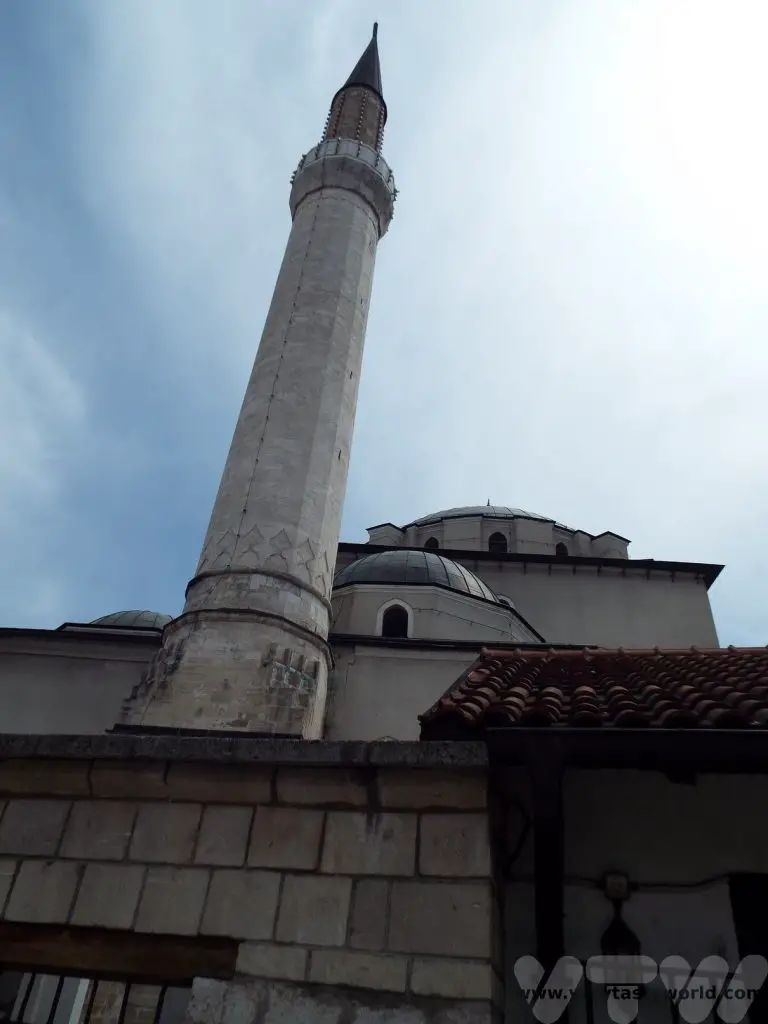
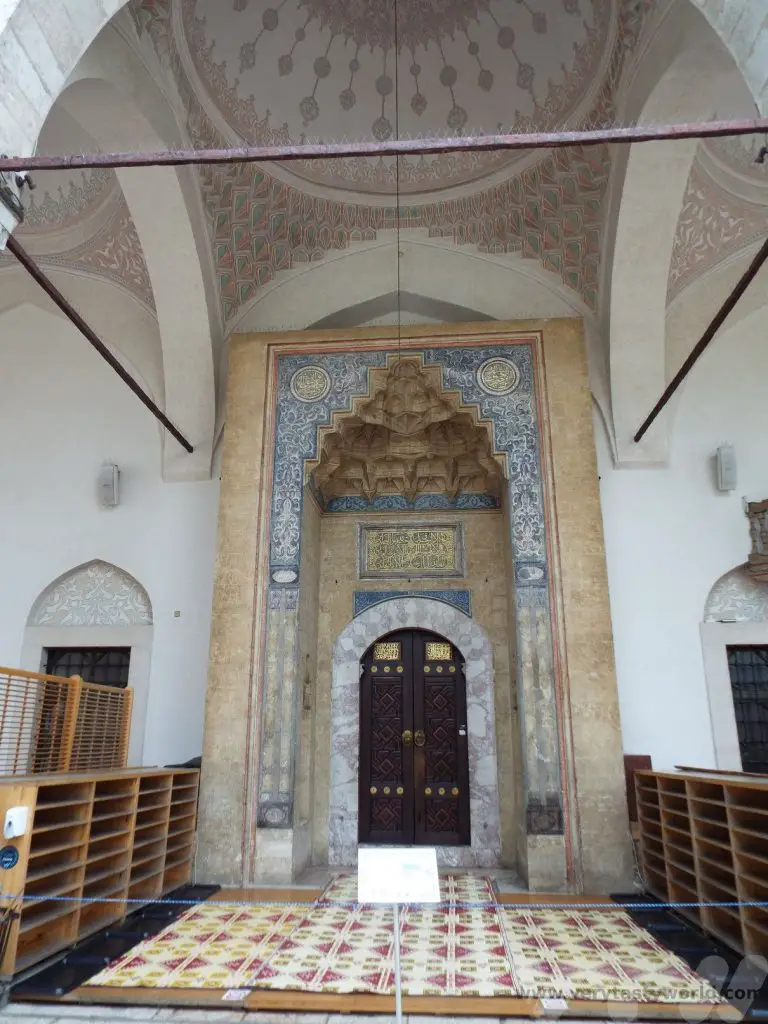
It is located next to the covered market, which still operates as a market, albeit with more touristy goods on offer these days.
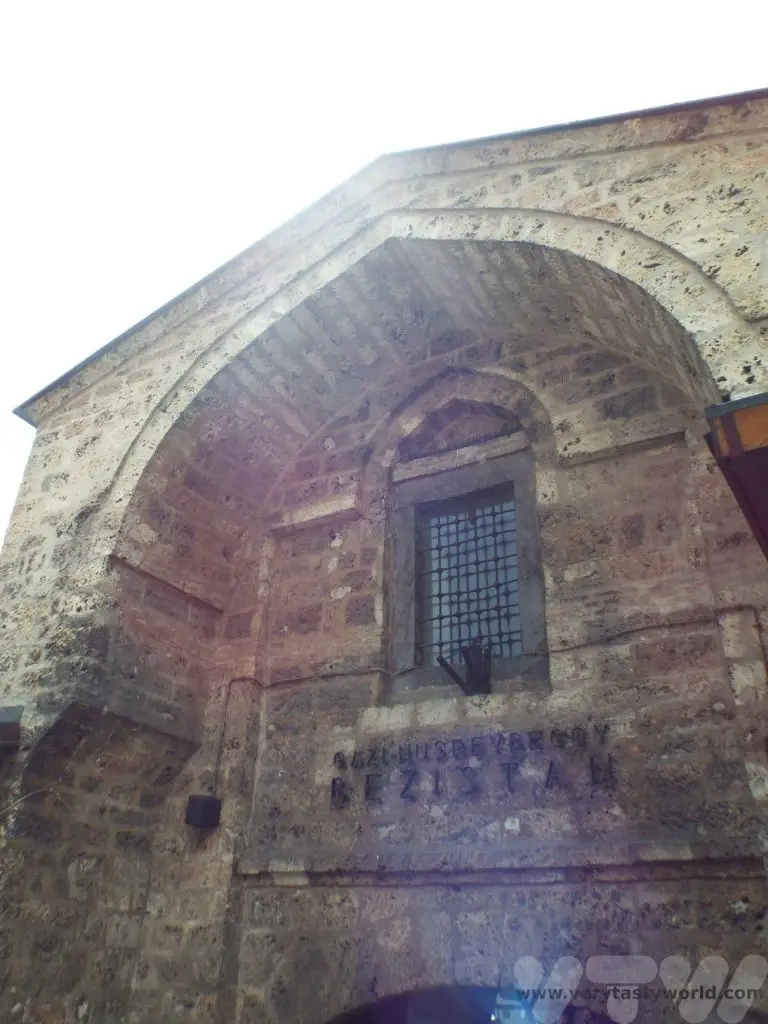
The complexity of the water system that was developed during Ottoman times can be seen in the ornate fountains.
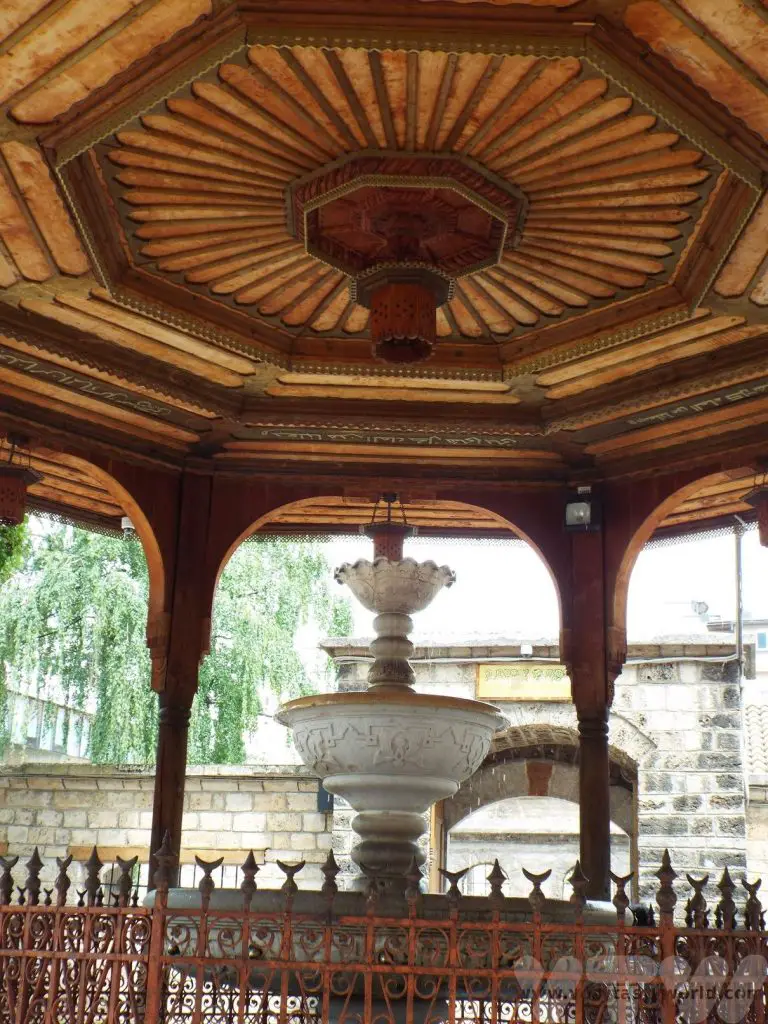
With a clock tower, library, religious schools, bathhouses and a sophisticated water system, Sarajevo was one of the most important and enlightened cities of the Ottoman empire, second only to Istanbul.
It is a delight wandering through the old town. There are lots of streets with all sorts of goods to buy and craftspeople making and selling their wares. Lots of foodie shops and restaurants too! If you want to buy a coffee set or indeed some delicious coffee there are plenty of emporia in the area to choose from.
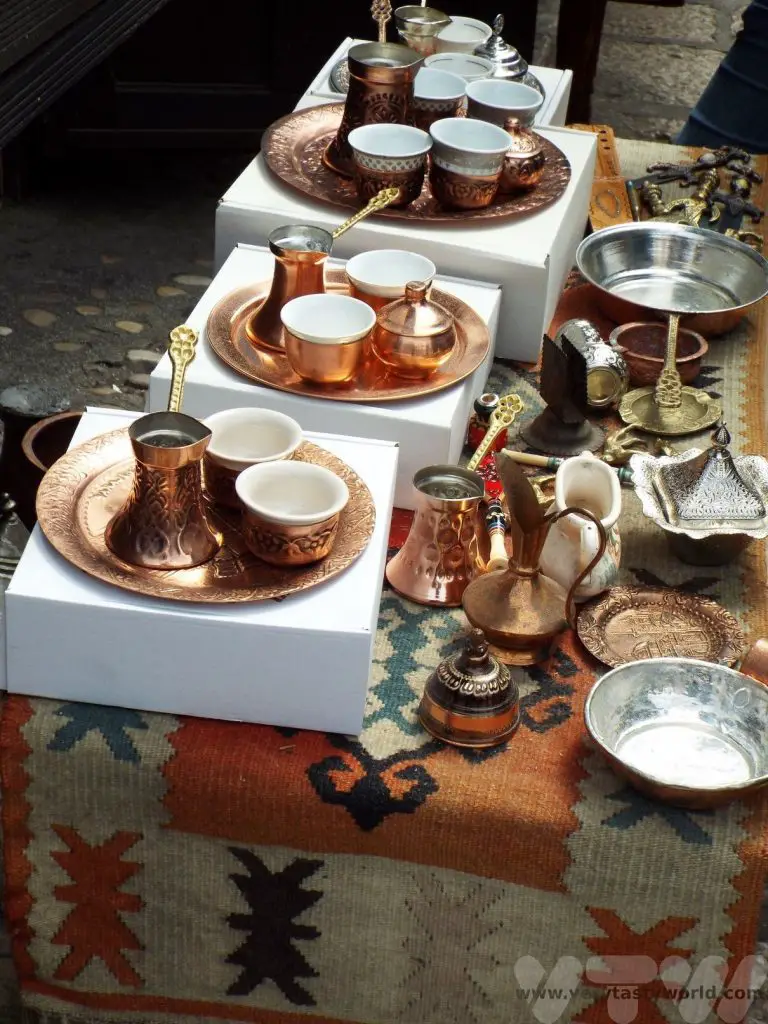
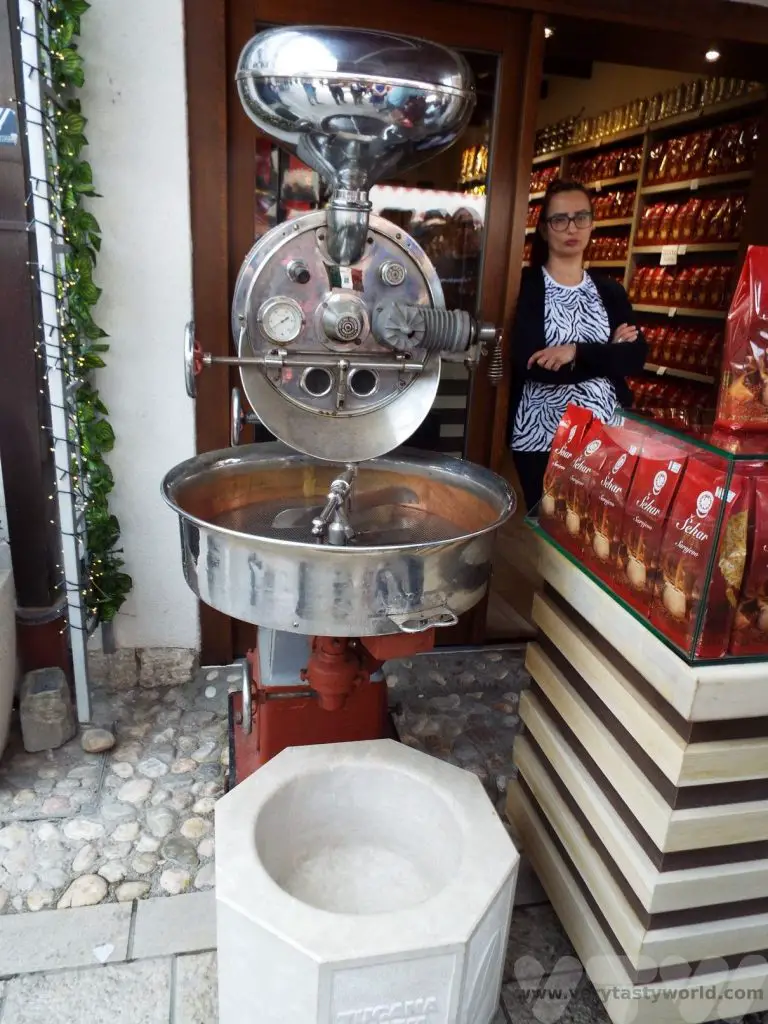
Like many places it can get crowded, so we were advised to beware of pickpockets, be alert and keep valuables safe.
In the 16th century Christians and Sephardic Jews, who were fleeing persecution, moved to the city and established places of worship. Sarajevo remains a places where people of multiple religions live together.
Austro-Hungarian Sarajevo
After walking through the old town we reached the river Miljacka which has carved its way through the mountains over the millennia. By 1878 Bosnia Herzegovina had been annexed to the Austro-Hungarian Empire. A series of modern buildings were constructed along the river’s banks. One of these was the town hall. Designed in 1891 it bears Moorish influences.
This impressive building had many functions over the years, including as a parliament building and national library.
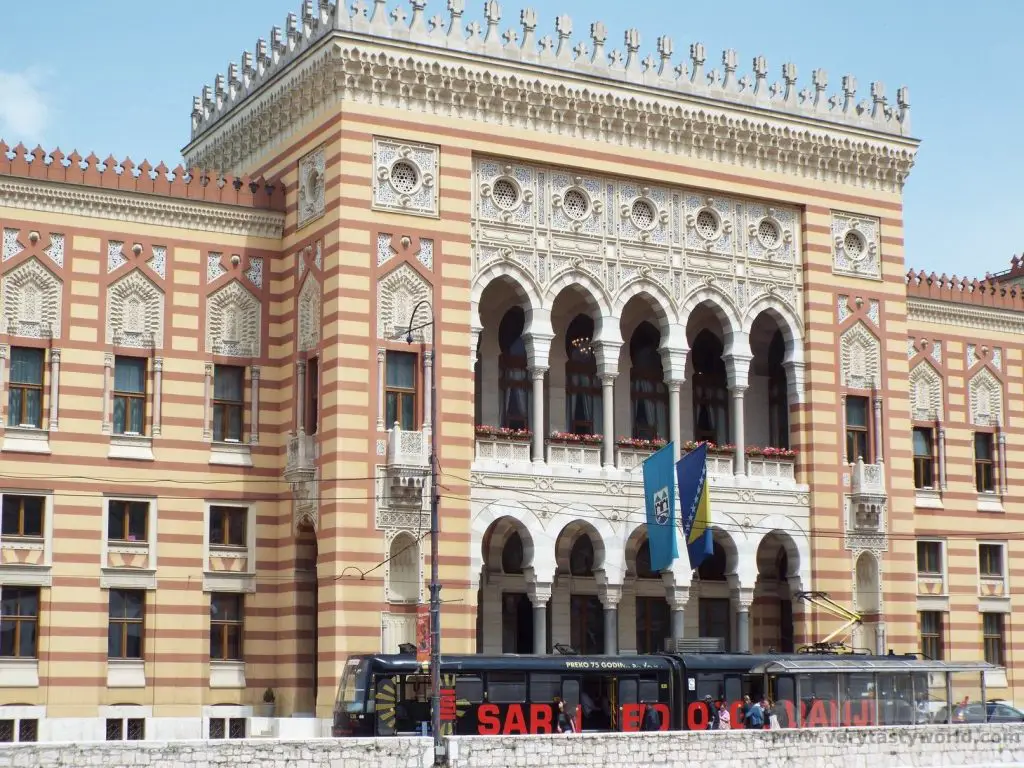
It was hit by incendiary bombs in 1992 during the Bosnian War and the library, along with most of the books, was lost in a fire which destroyed the building. However, it was rebuilt and opened again in 2014.
On the other side of the river is a building known as the spite house, which was located on the site where the main building was to be constructed. Despite many financial incentives, the owner refused to sell his house and so the authorities eventually relocated it on the other side of the river. Known as Inat Kuca, it is now a restaurant.
It’s a pleasant walk along the river banks, although the muddy river was very much a contrast to the crystal clear waters of Mostar and other rivers in the region.
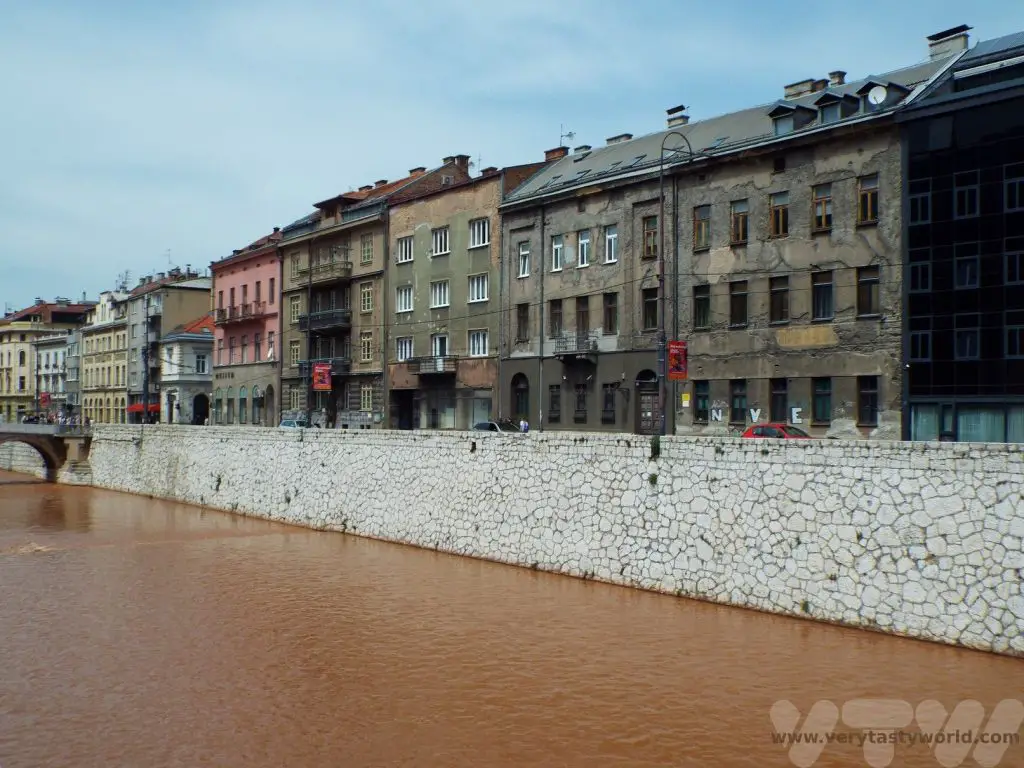
Crossing back over the river via the Latinska Ćuprija bridge we reached another location that placed Sarajevo in the history books.
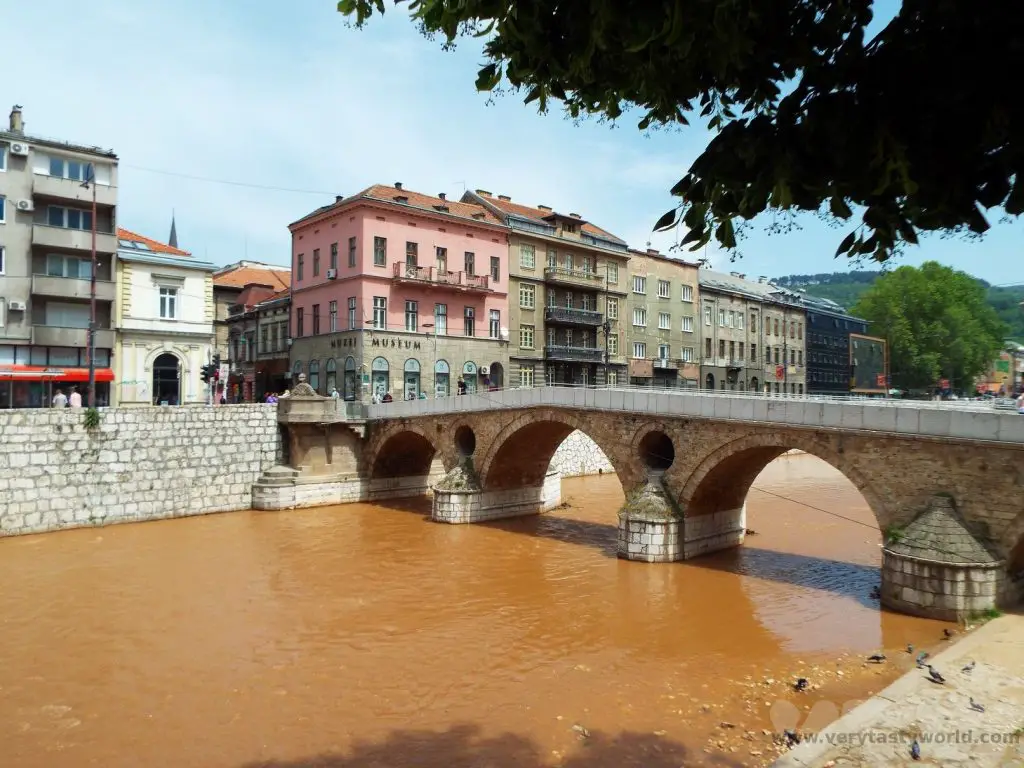
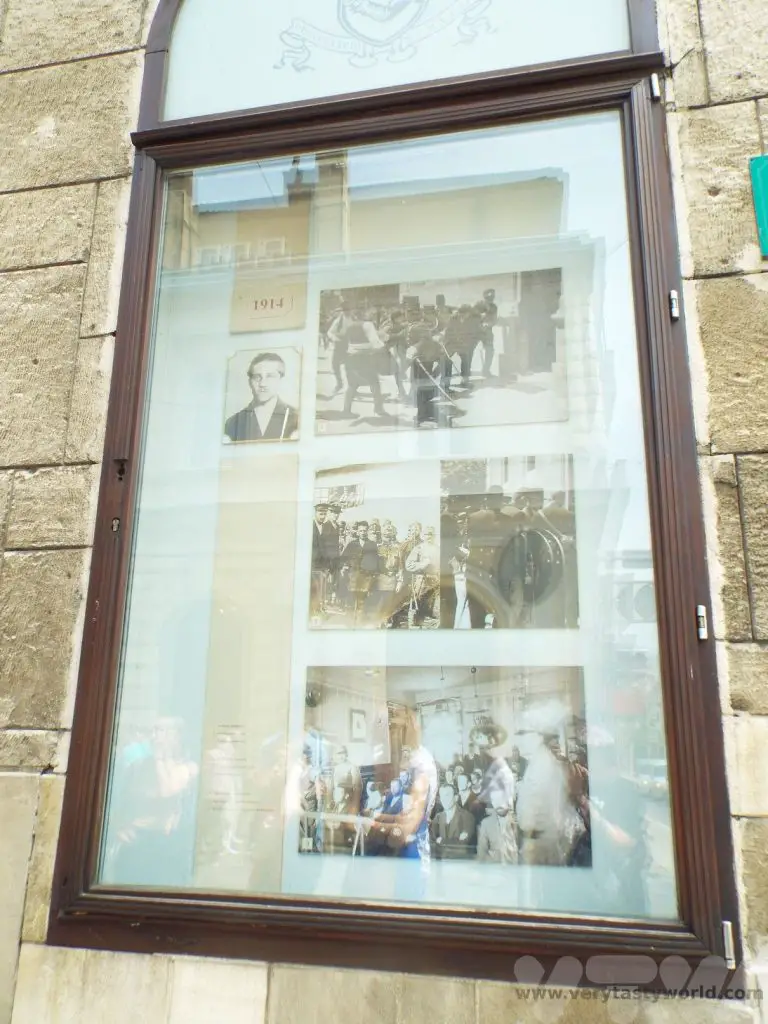
It was on the corner of the street leading onto this bridge where Archduke Franz Ferdinand of Austria, who was heir presumptive to the Austro-Hungarian throne, and his wife, Sophie, were shot at close range on 28 June 1914 by nationalist Bosnian Serb student Gavrilo Princip. This event led to the start of World War One.
Following the end of the war, the Austro-Hungarian Empire collapsed and Bosnia and Herzegovina was absorbed into Yugoslavia. During World War Two the city was invaded by the Nazis. Of the 12,000 Jewish people living in Bosnia and Herzegovina 10,000 lived in a thriving community in Sarajevo. It is estimated that 8,000 lost their lives in the Holocaust.
Learning About The Siege of Sarajevo
1992 saw the break up of Yugoslavia and, tragically, the commencement of the Bosnian War. Bosnia and Herzegovina declared independence from Yugoslavia but following a referendum, which Bosnian Serbs refused to participate in, the Serbs encircled Sarajevo and blocked all routes to and from the city. Sarajevo remained besieged for 1425 days, the longest siege in modern history.
During our Sarajevo walking tour we learned about how the local people coped during this horrific time. The city was constantly shelled by forces located in the surrounding hills. Our guide told us that when the water and electricity supplies were halted, people would have to risk their lives crossing the river carrying containers so that they could get access to water from the Sarajevo brewery. It is estimated that nearly 14,000 people were killed, over a third of them civilians.
The film Welcome to Sarajevo (1997) by Michael Winterbottom tells a powerful story, which includes real footage of the war. It makes for difficult viewing but offers a compelling insight into a horrible war.
The siege ended on the 29th February 1996. In the years following the war a number of perpetrators and their superiors were convicted for Crimes Against Humanity.
Further Exploration of Sarajevo
We thoroughly enjoyed the small Sarajevo brewery museum. The delightful guide showed us around and told us about the history of the brewery.
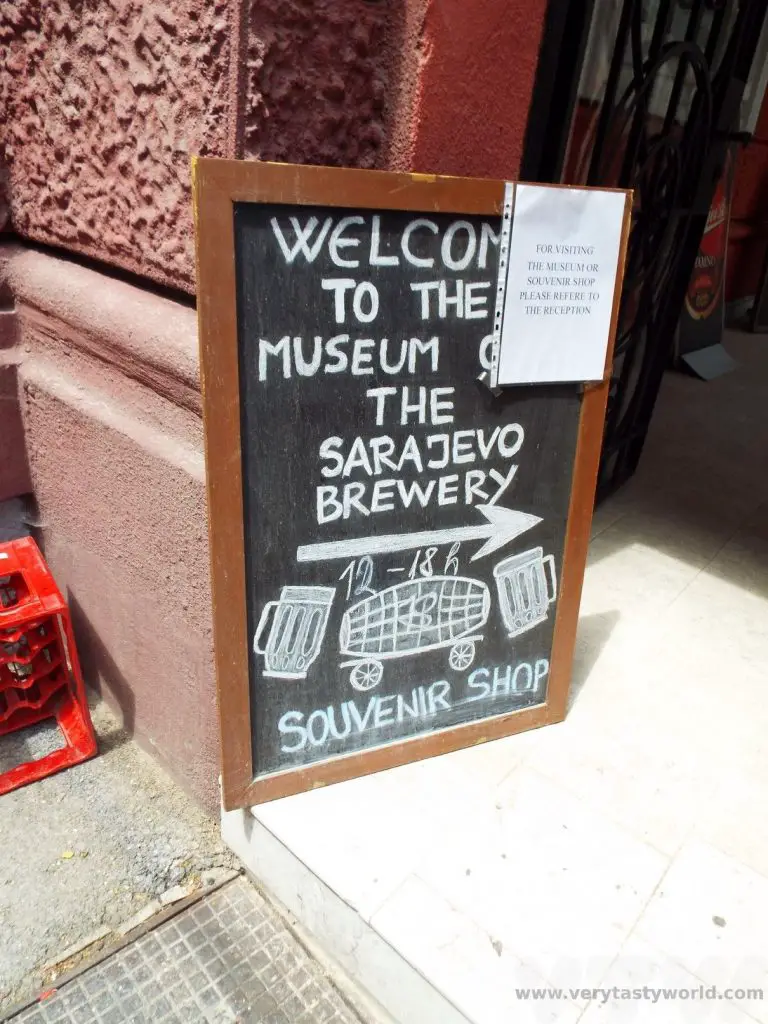
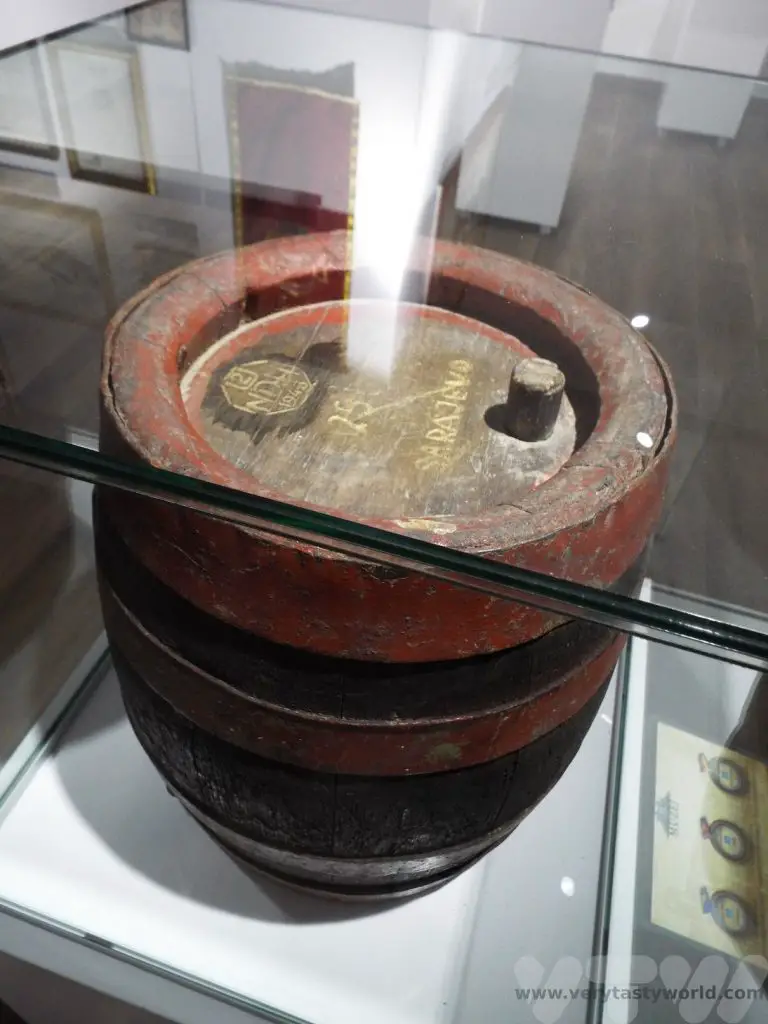
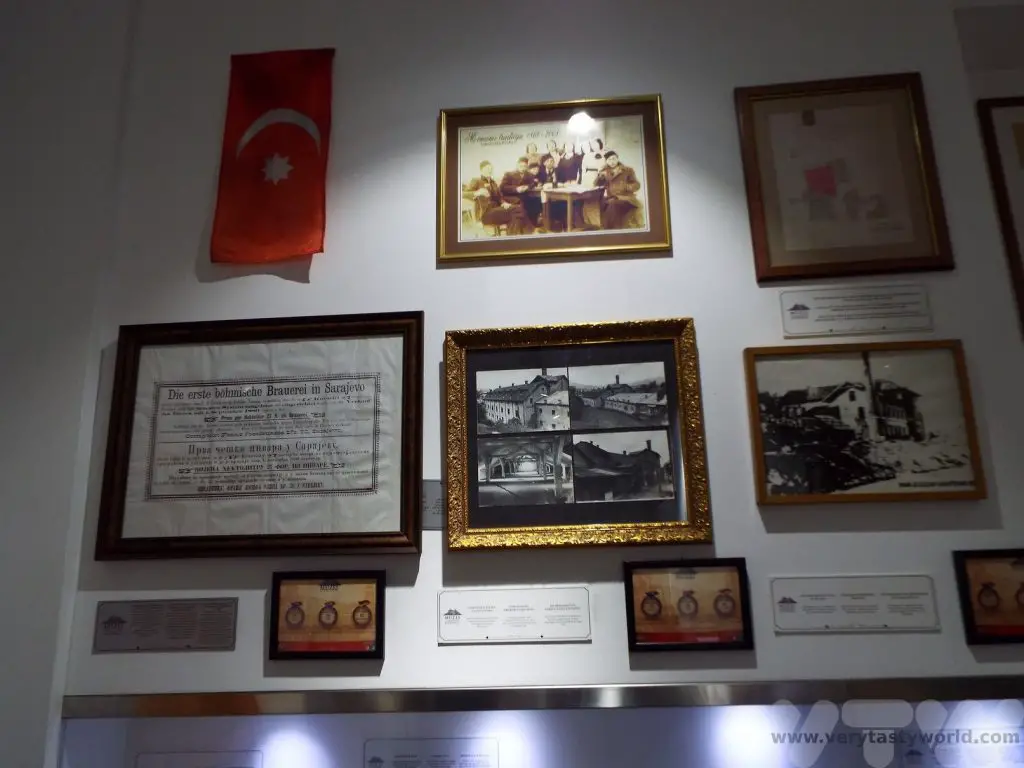
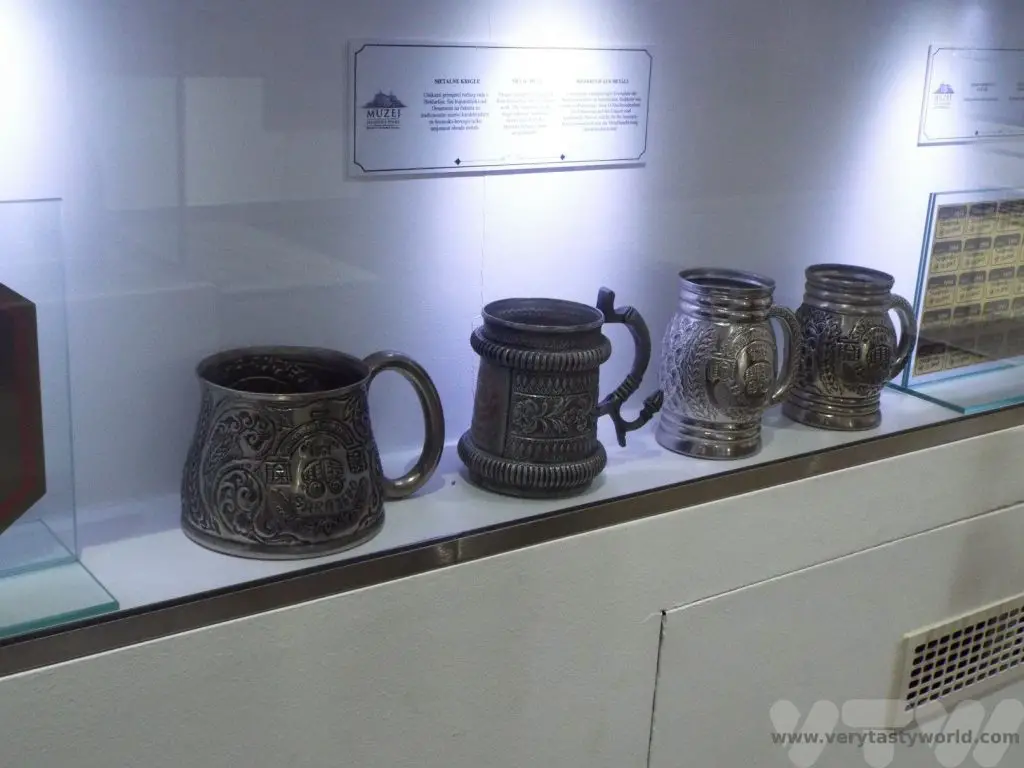
However, when we went to the adjoining bar to enjoy some of their beers, we were turned away because apparently we didn’t comply with their dress code. We were wearing t-shirts, long trousers and walking shoes, not tracksuits, trainers and baseball caps. We checked the requirements and confirmed that we were not in contravention. The manager, dressed in a t-shirt and shorts, eventually accepted that we were dressed correctly. To be honest, though, we didn’t want to drink where we weren’t welcome. Their loss.
We also visited some of the churches. Sacred Heart Cathedral is a catholic church and the largest cathedral in the country. It was completed in 1887. It was damaged during the siege of Sarajevo but has since been restored.
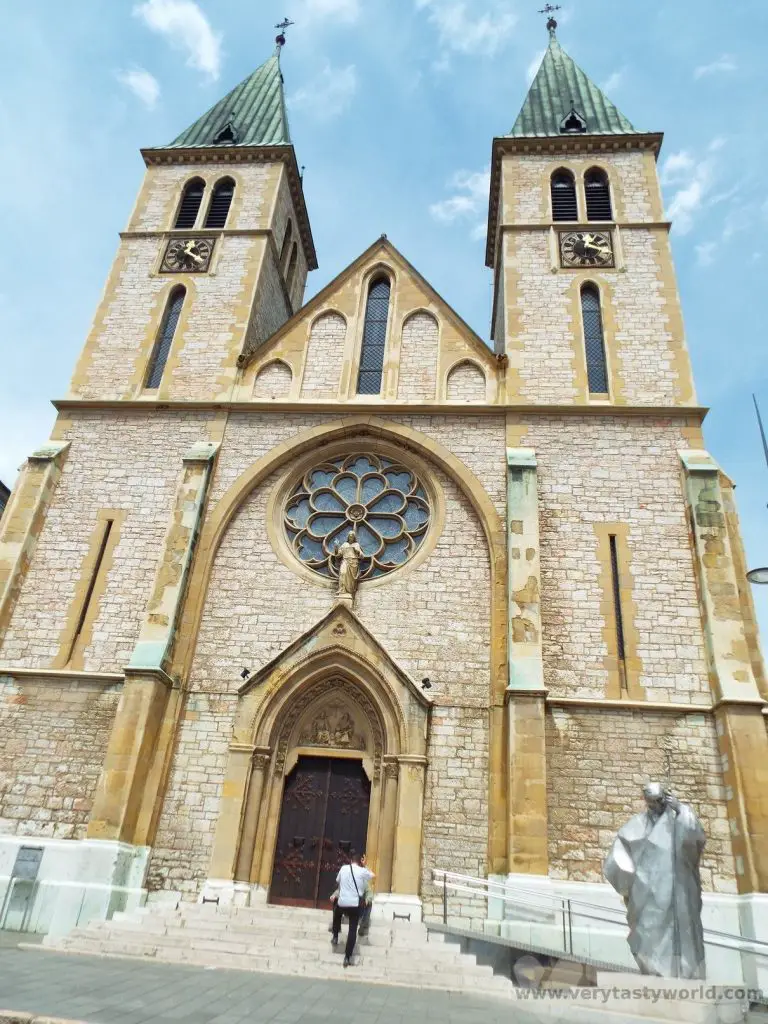
In the pavement in front of the church there is a square which has a mortar shell crater filled with red concrete, creating a pattern. It’s there to remind people of the war.
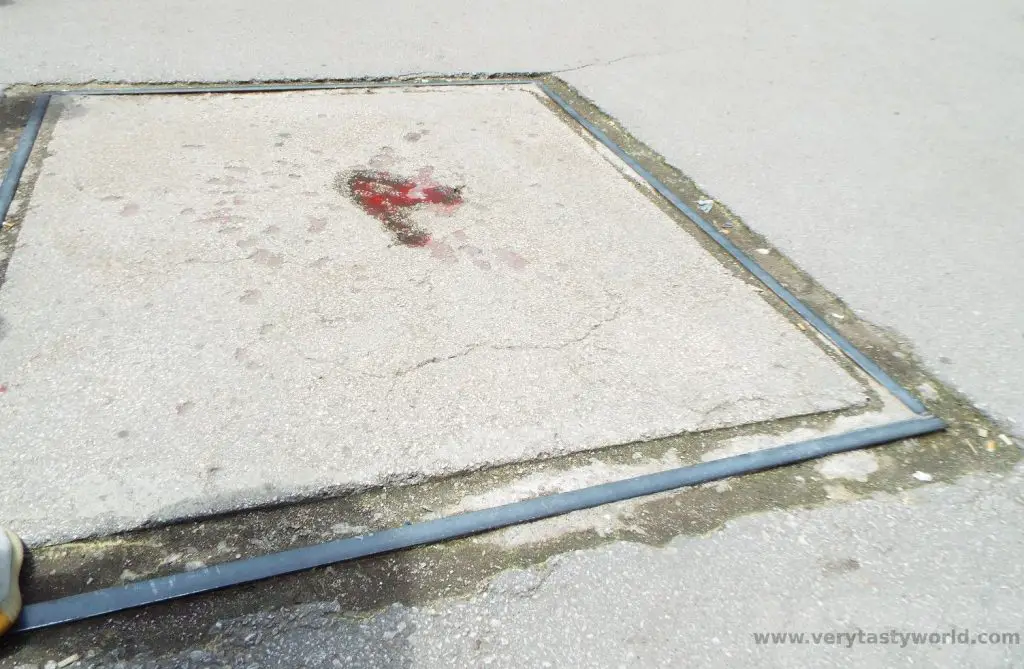
Constructed in 1863, the Cathedral Church of the Nativity of the Theotokos is Sarajevo’s largest Orthodox church.
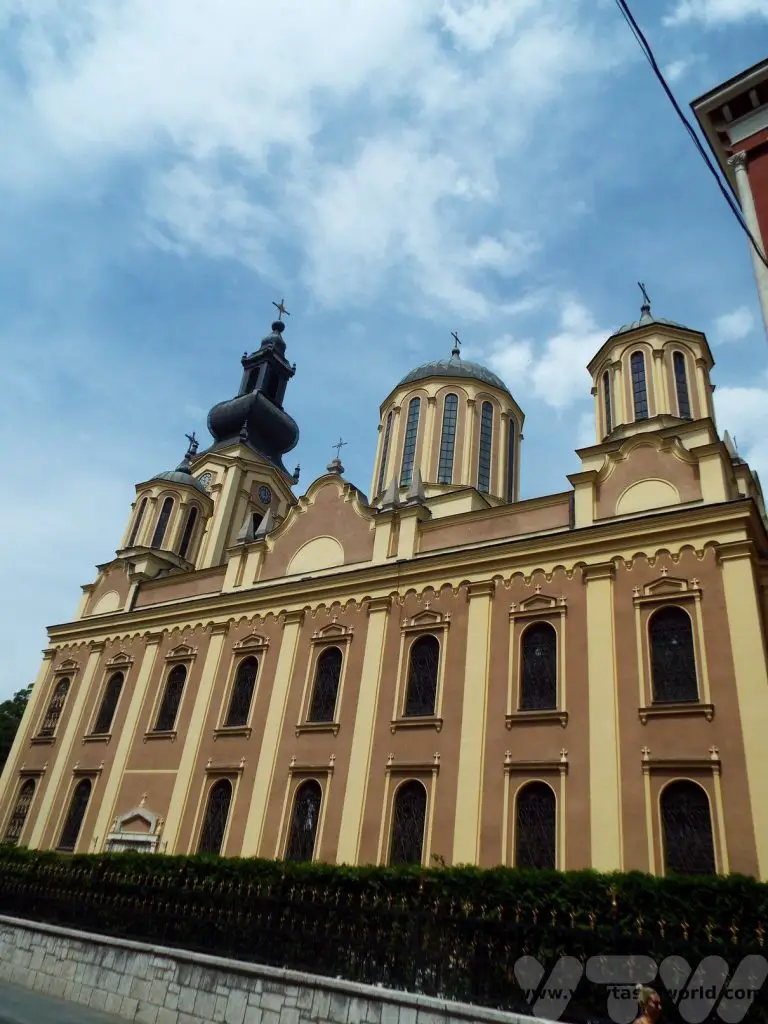
Beside the Europa Hotel it is possible to see the remains of a caravanserai, known as Taslihan, which was originally constructed in the mid-16th century. It was only discovered when the hotel was being renovated but now the former walls are a part of the garden. In its day it was a large market which also offered accommodation for merchants.
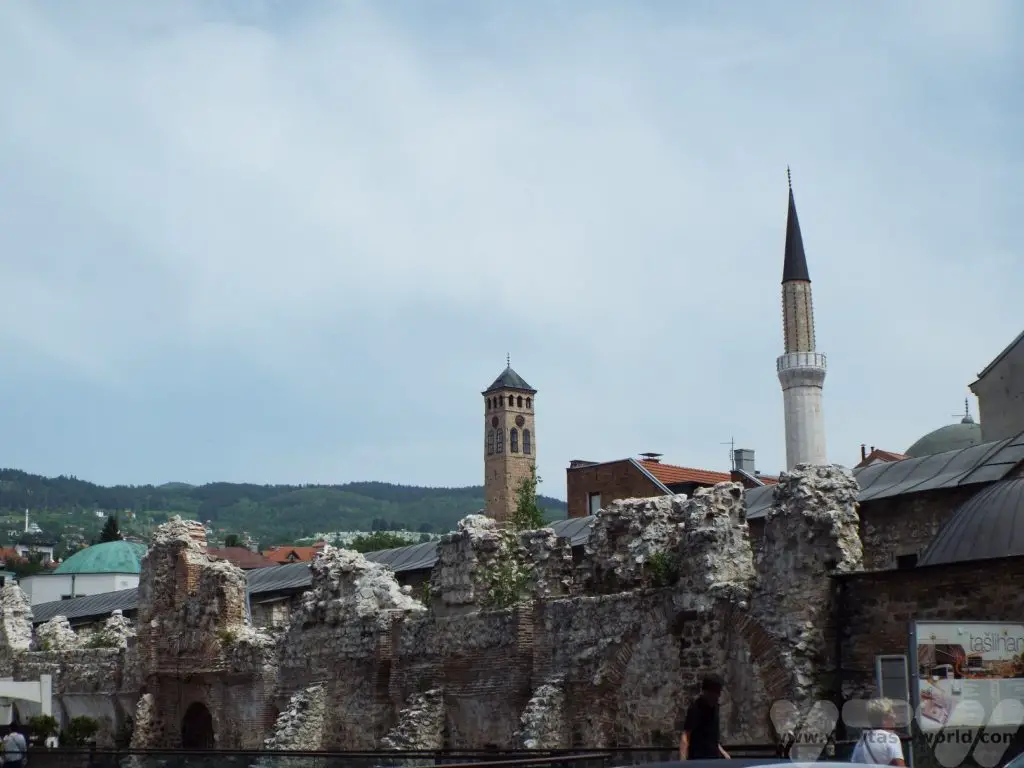
A Bosnian Cookery Course
Aside from city walking tours we also love taking cookery lessons whenever we visit a new country. We were delighted to join Mersiha and Mustapha from Bosnian Cooking Lessons at their home to learn how to cook traditional Bosnian cuisine. There were five dishes on the menu:
Sogan dolma – Onions filled with minced meat, rice and spices
Japrak mangel/spinach leaves rolled and filled with minced meat, rice and spices
Dolma paprika filled with minced meat, rice and spices
Bosnian pita – Phyllo dough rolled with cheese and phyllo rolled with peppery potatoes
We arrived at Mersiha and Mustafa’s home located high in the hills surrounding Sarajevo. It had a lovely view of the city. Mersiha and Mustafa grow a lot of vegetables in their garden and we enjoyed chatting with them about growing food. We were offered some traditional Bosnian snacks and a nice cool beer.
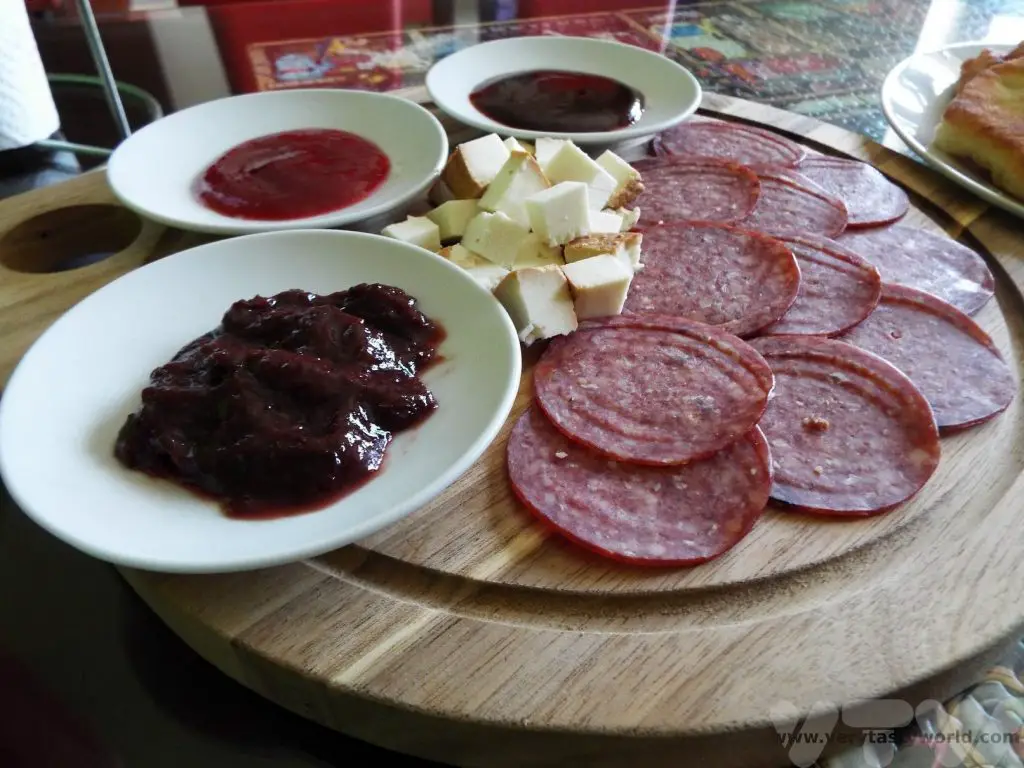
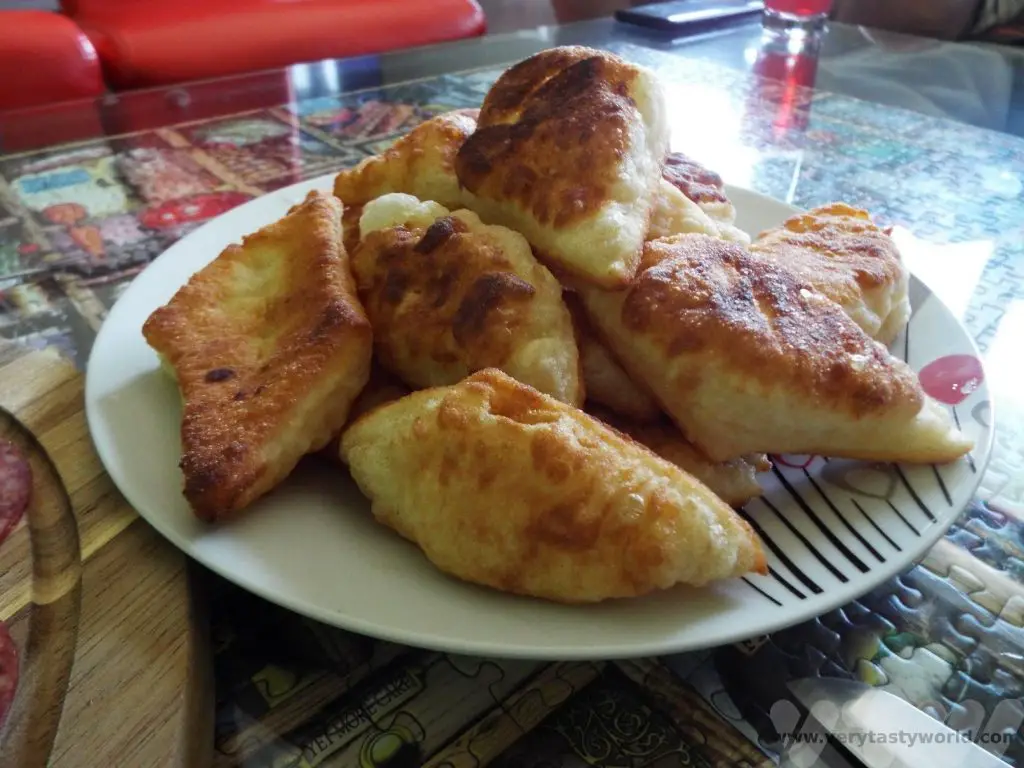
Then it was into the kitchen. Firstly we made the stuffing preparing the minced meat with rice and spices.
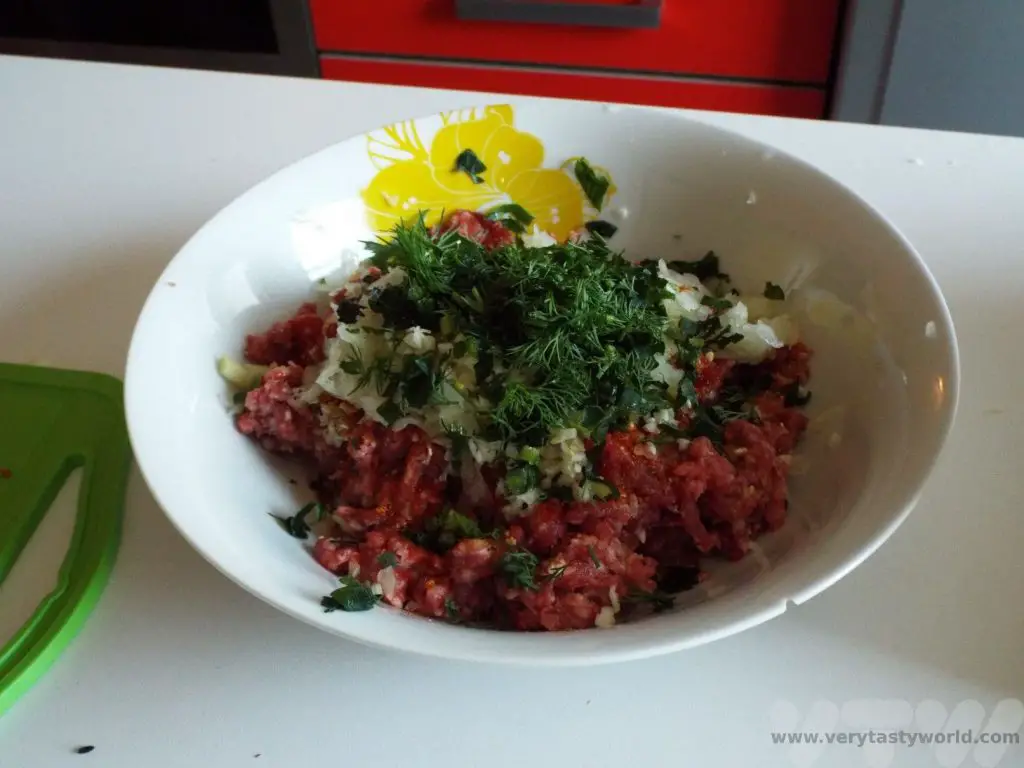
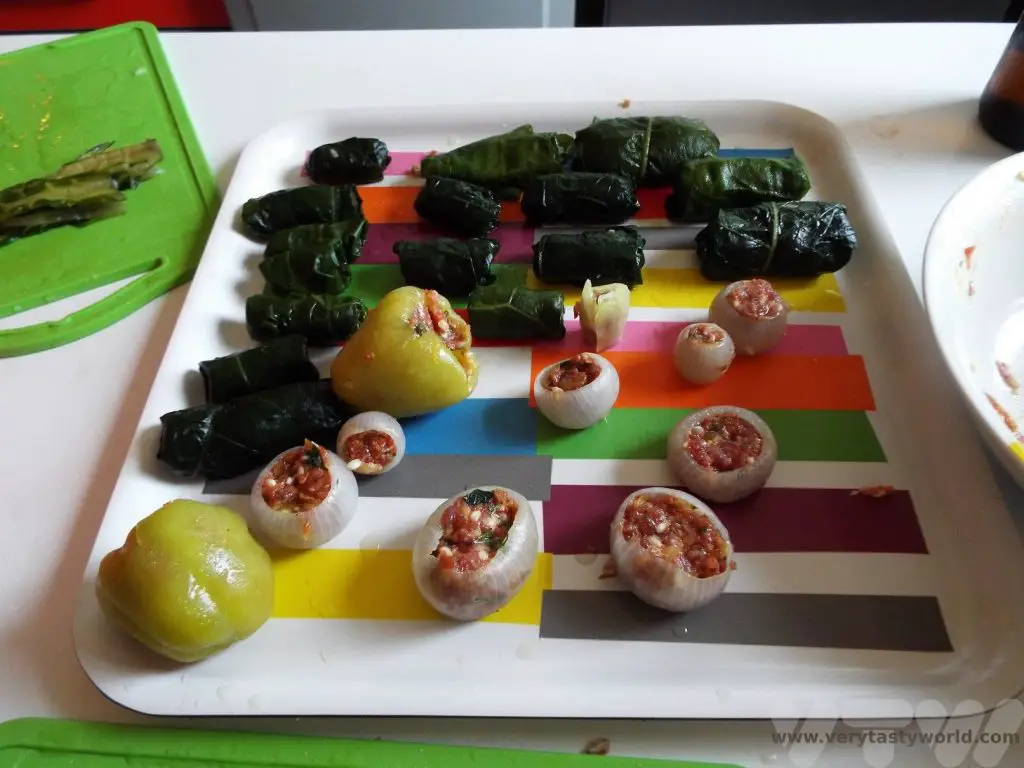
We learned how to stuff onions, layer by layer, as well as paprika. We also learned a technique for preparing and filling the mangel leaves. The folding technique was brilliant and we have used it since. These would all be cooked together in a lovely, lightly spiced, tomato sauce. We were impressed that Mersiha made sure that nothing went to waste. Any leftover bits of vegetable went into the sauce to add to its richness.
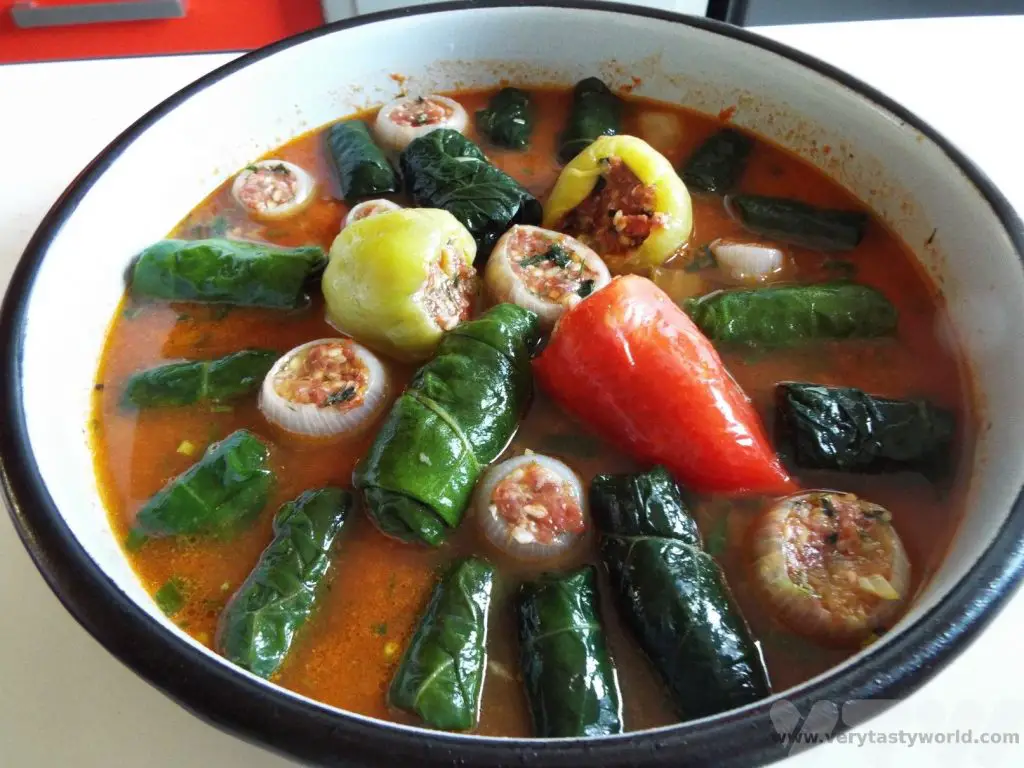
Next step was preparing phyllo. Mersiha expertly prepared a dough to exactly the right consistency and let it rest. When it was ready it was rolled onto the tablecloth and had another rest while we prepared two fillings: one of soft cheese and egg, and another of grated potato with lots of black pepper. Then we pulled the dough, by hand, so that it covered the entire table! It was so very thin – paper thin – but yet elastic and strong enough to take a filling. Mersiha was an excellent teacher and guided us really well.
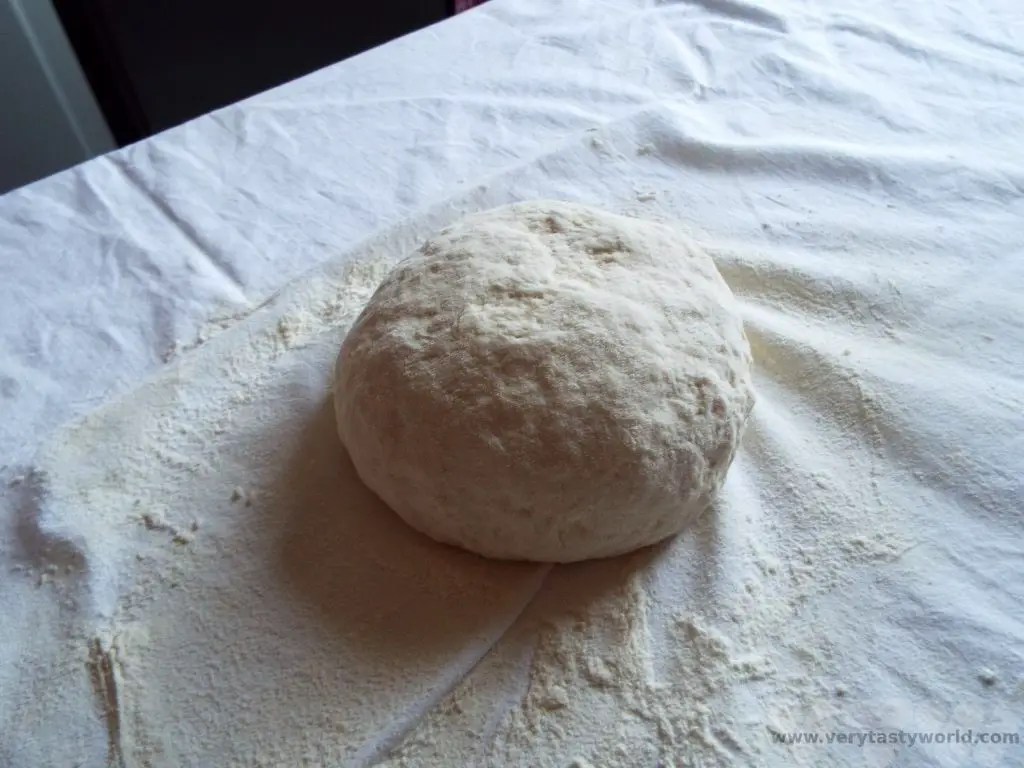
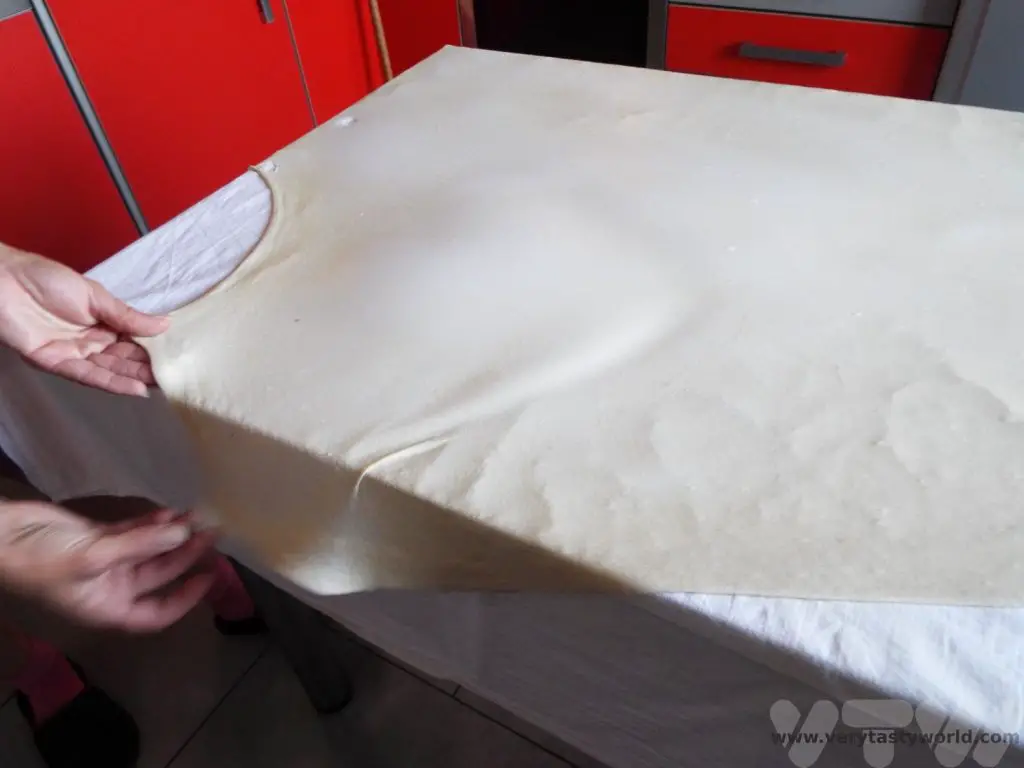
After adding the filling in a long line, the phyllo was rolled up to create a sausage shape, then cut into pieces and rolled into swirls before baking.
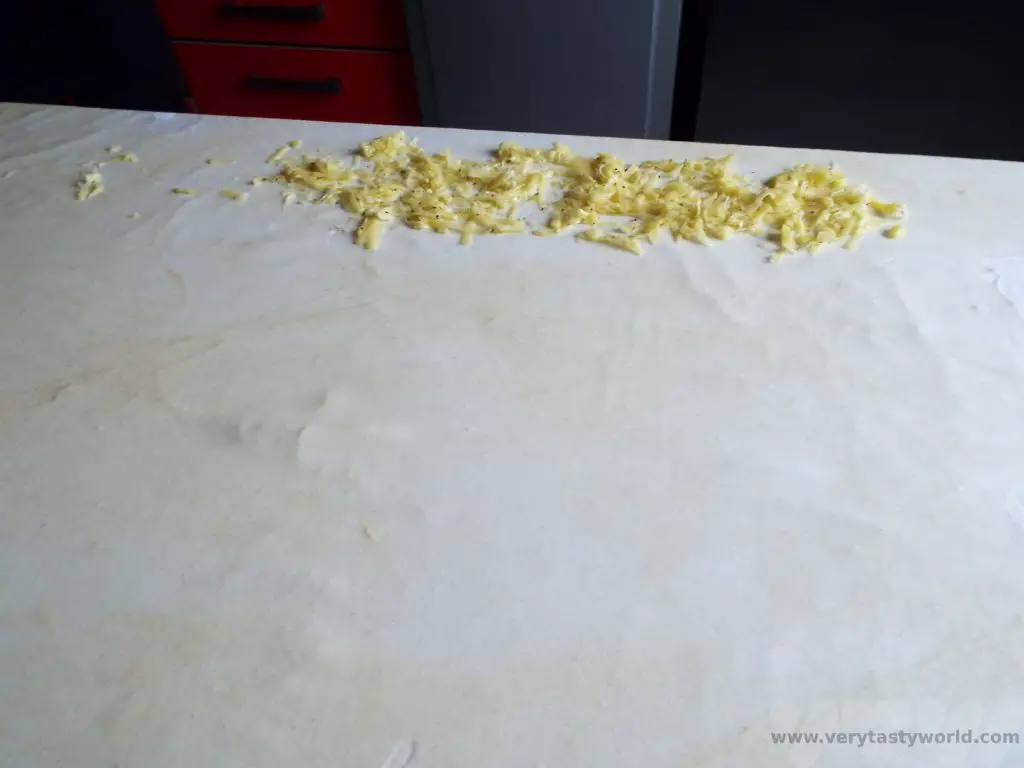
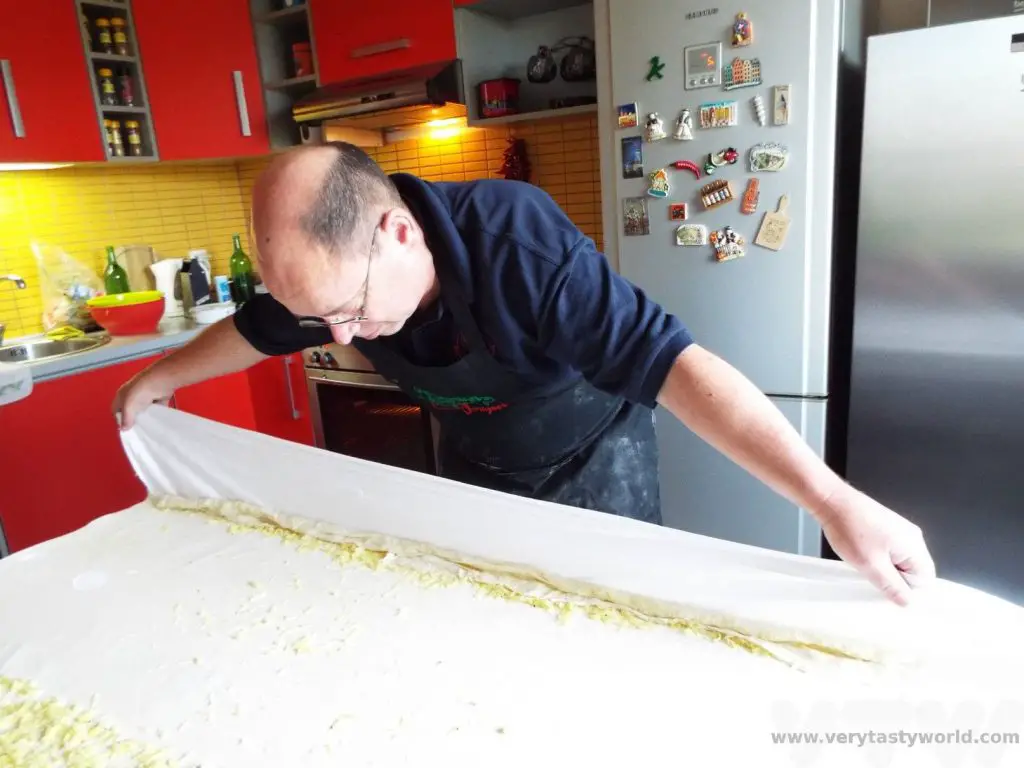
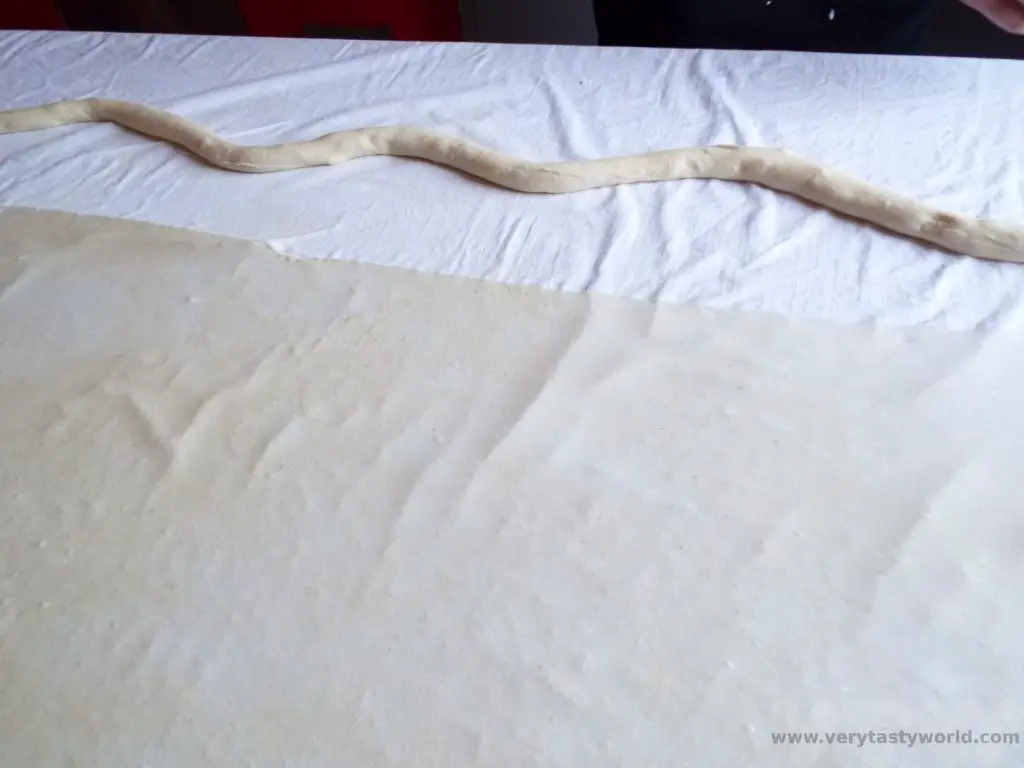
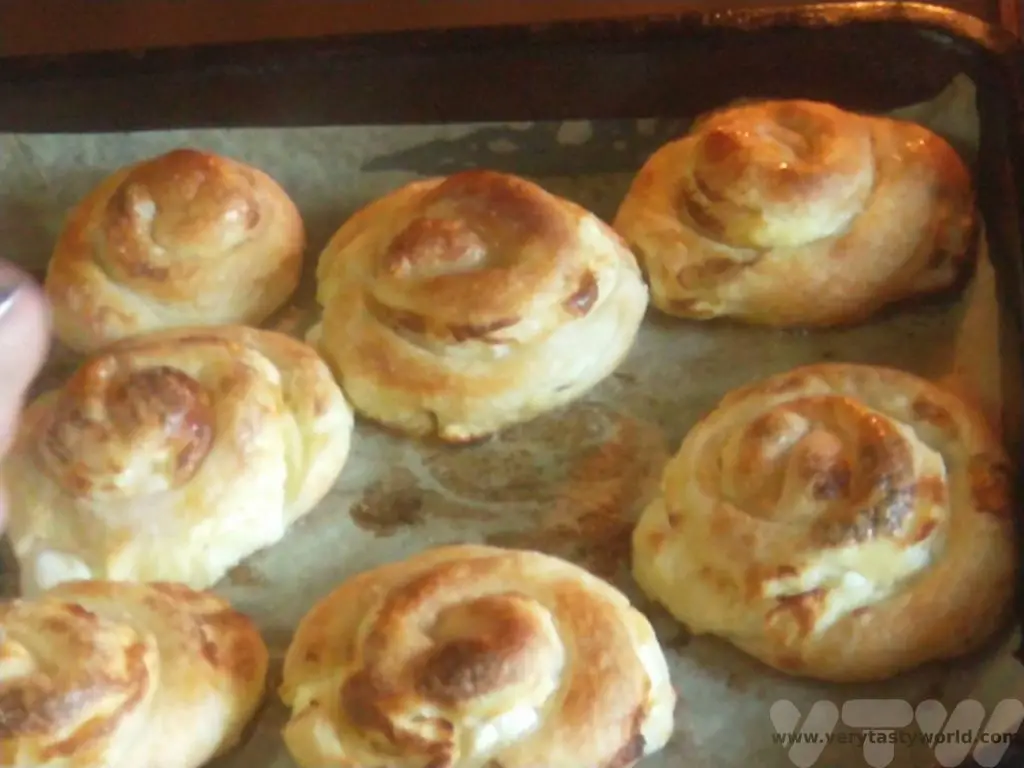
Both dishes came together at the same time. It was a really fun afternoon which culminated in us all enjoying a delicious dinner together.
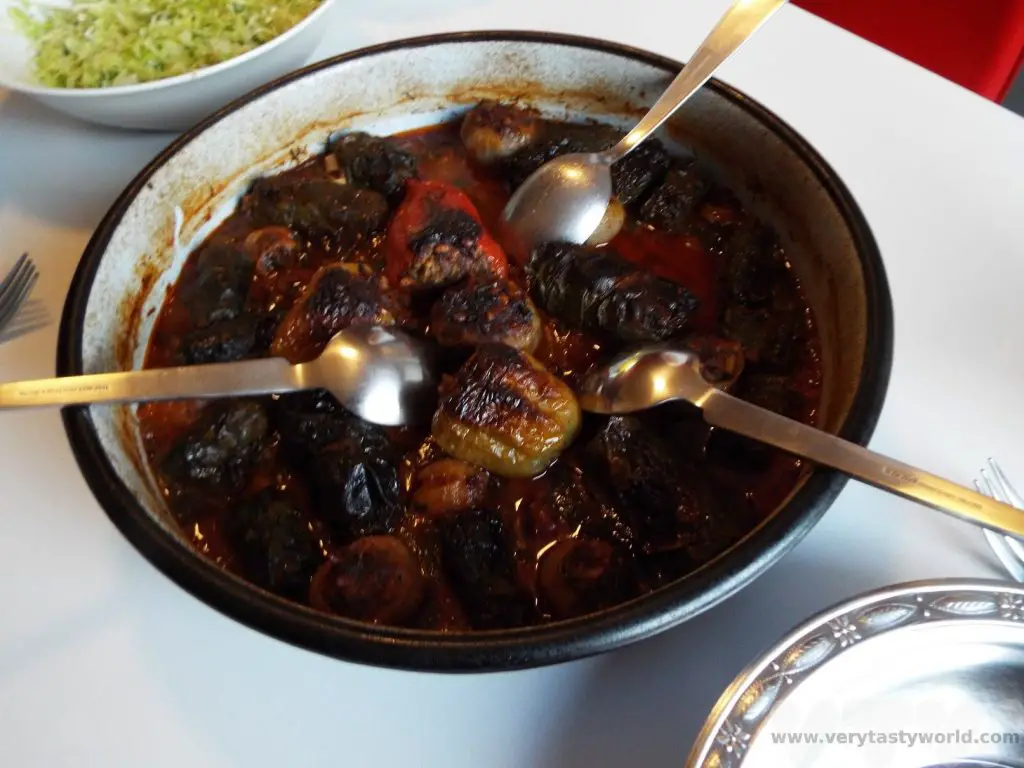
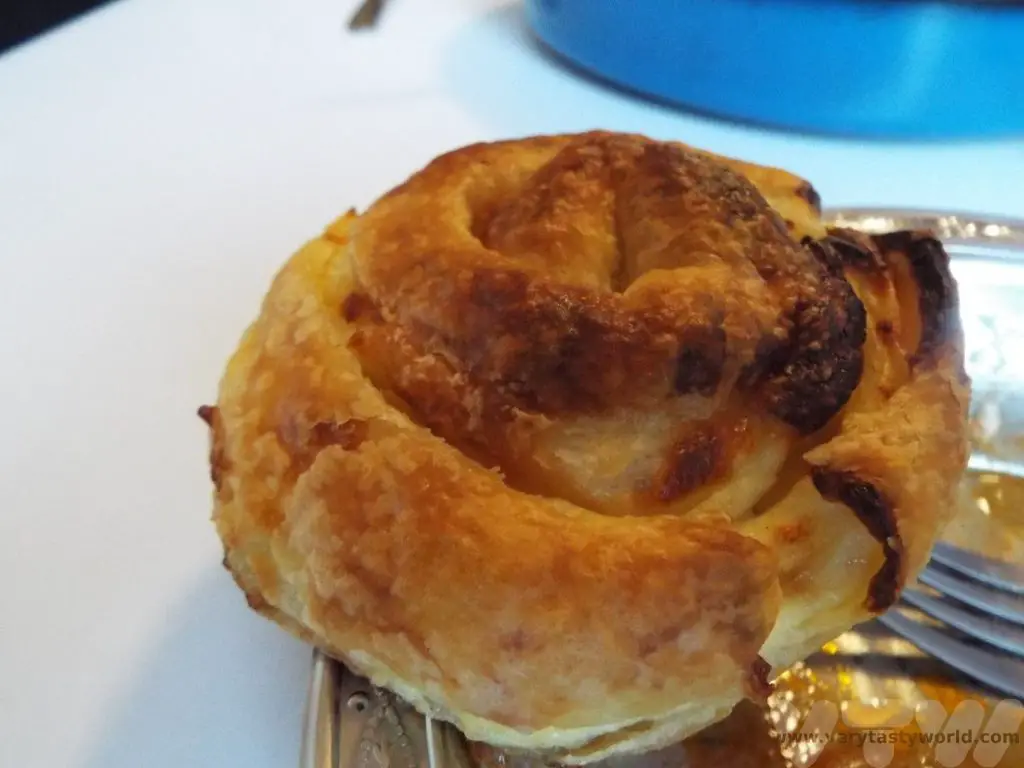
Mustapha and Mersiha were delightful hosts and excellent teachers. We thoroughly enjoyed not only cooking and dining with them, but also chatting with them about life in Sarajevo.
Sarajevo for Foodies
We stayed at the Hotel Aziza, which was close to the Yellow Fortress and a short downhill walk from the old town. You quickly find that you get a good workout walking anywhere in the city, especially in the suburbs, and it was a robust walk back up the steep hill every time we wandered into the old town. The Aziza offered a buffet breakfast with all sorts of interesting goodies, while not necessarily typical Bosnian, definitely the best brekkie we enjoyed in Bosnia.
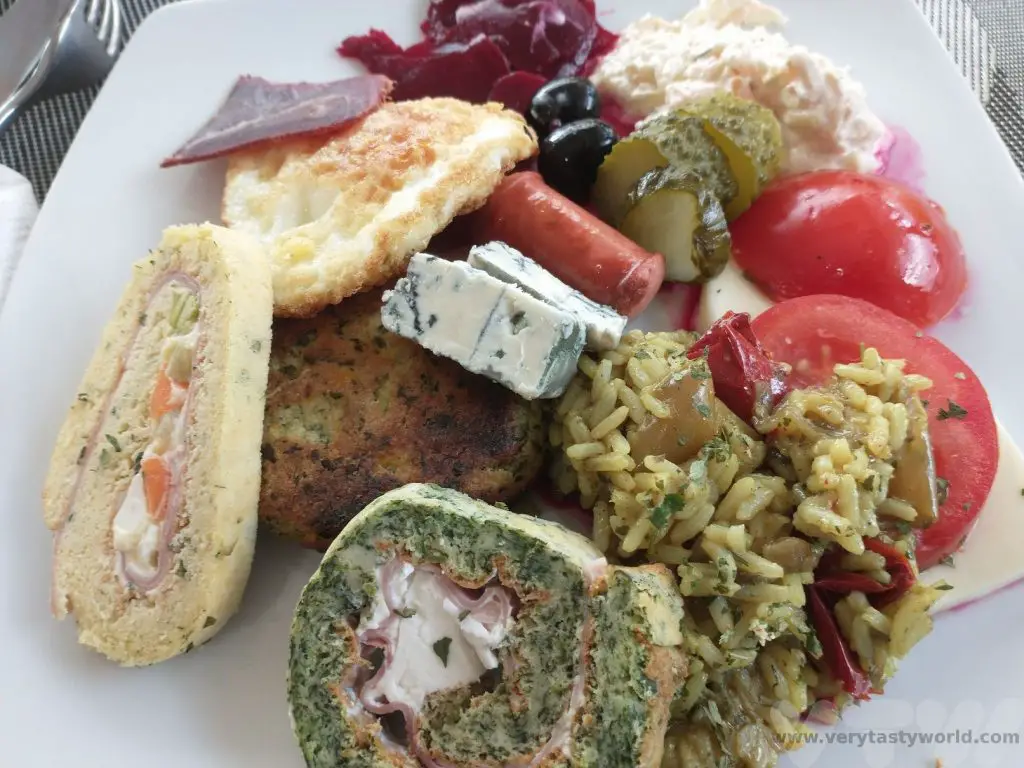
There are loads of restaurants in Sarajevo offering typical Bosnian fare. Bosanski sahan is a dish comprising meat with mixed vegetables in a sauce and sitni cevap is veal meat in sauce. These were served with delicious fluffy Bosnian bread and salad.
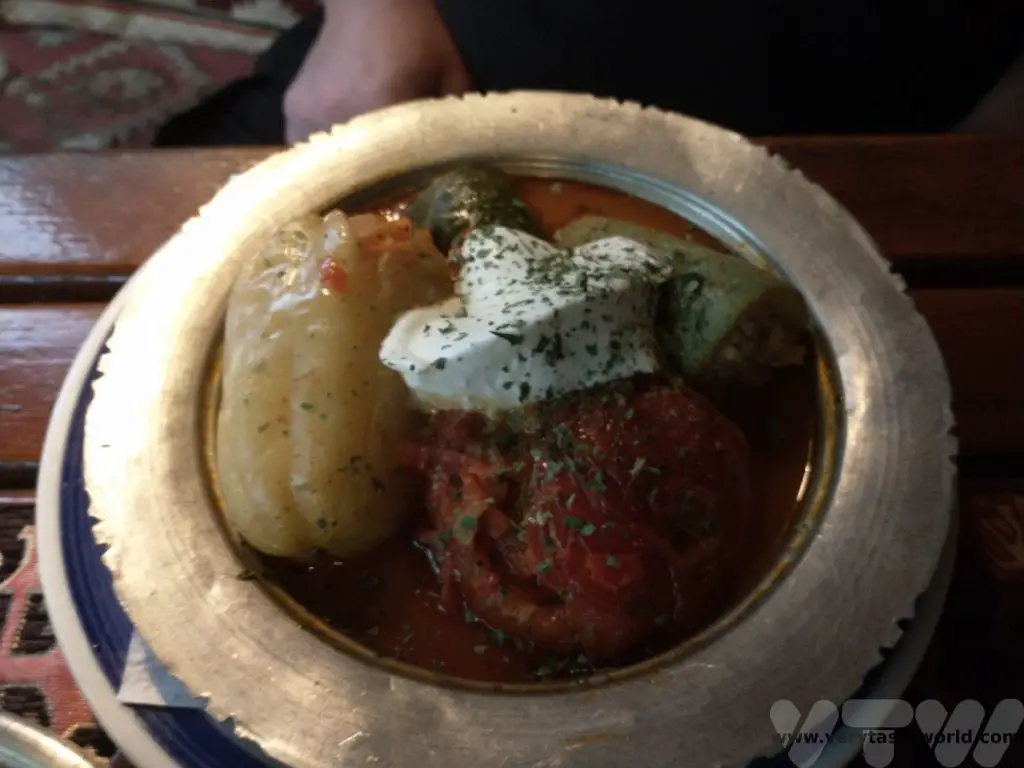
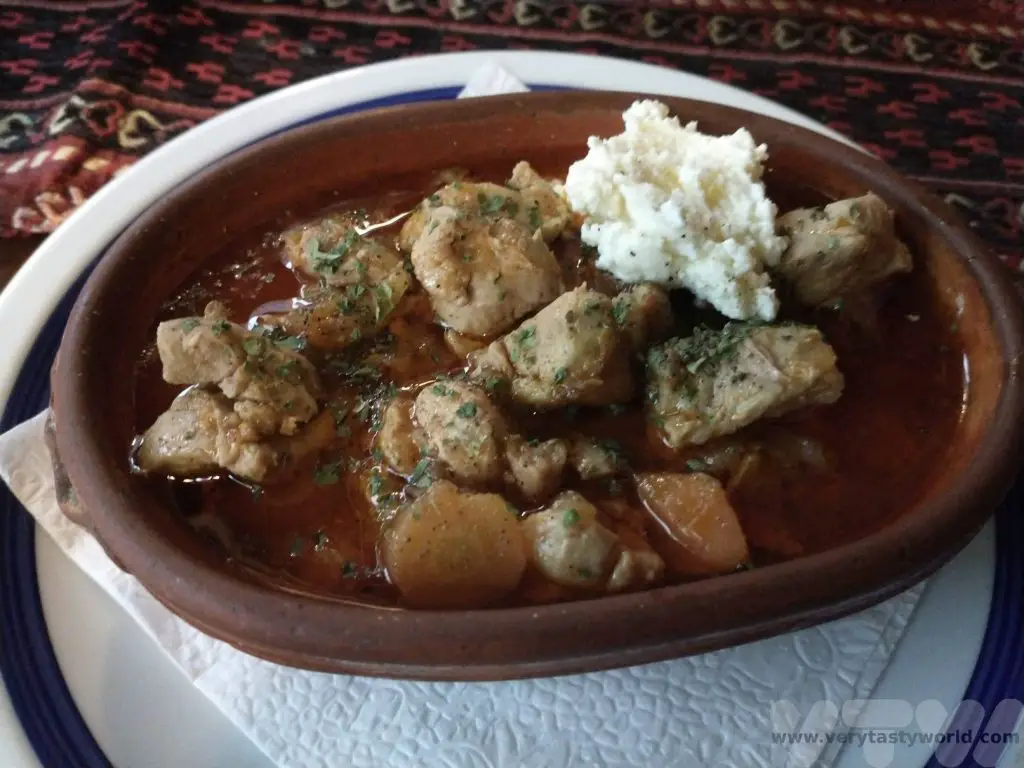
It’s essential to try cevapi – little meat sausages inside soft pillowy bread, accompanied with finely sliced onion. Make sure you order a large portion, they are so delicious.
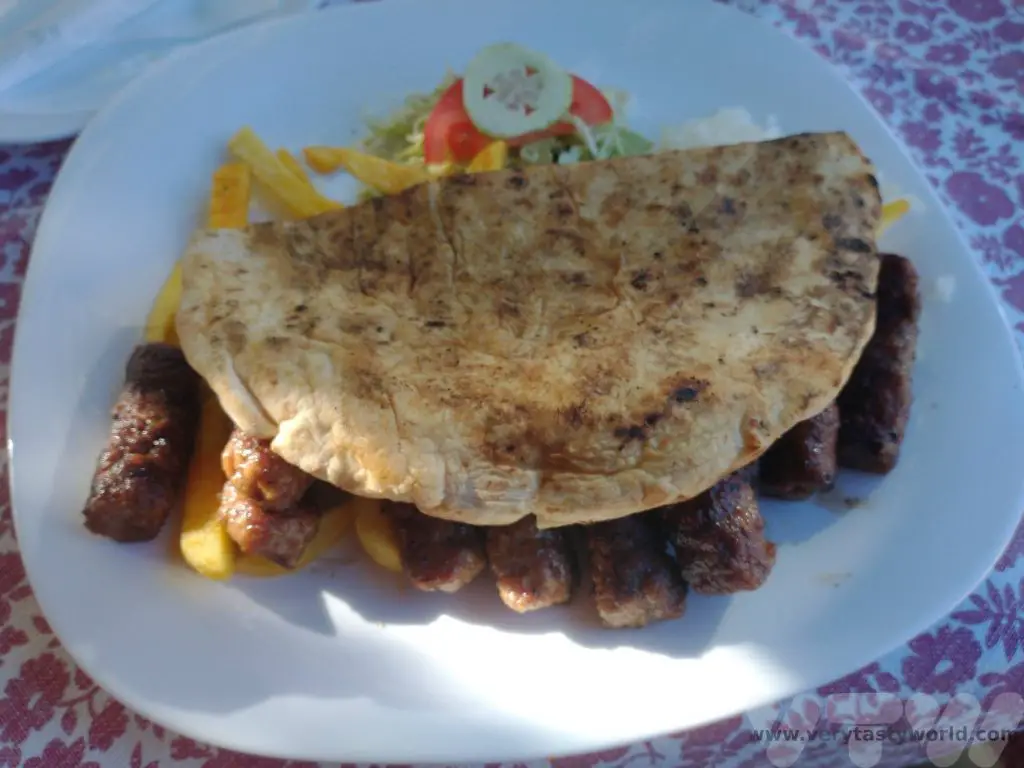
Desserts are luscious and sweet. We particularly enjoyed hurmasica, a gooey, syrupy cake. Coffee culture is also very important and the sweetness of the desserts is beautifully offset by the bitterness of the strong coffee.
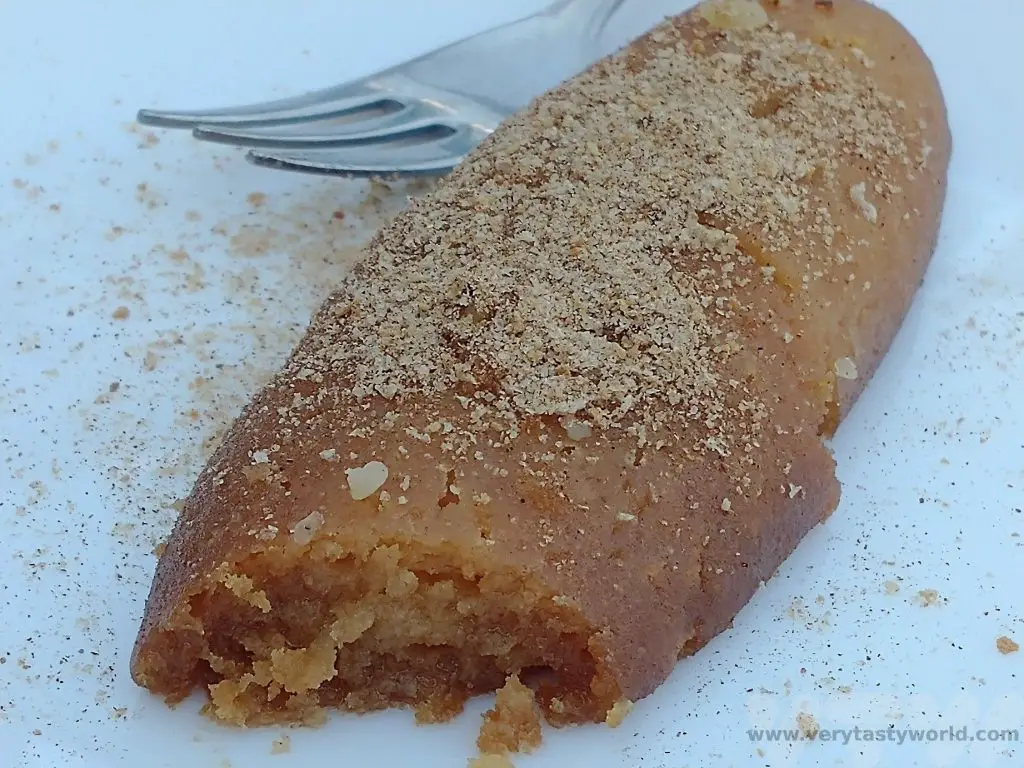
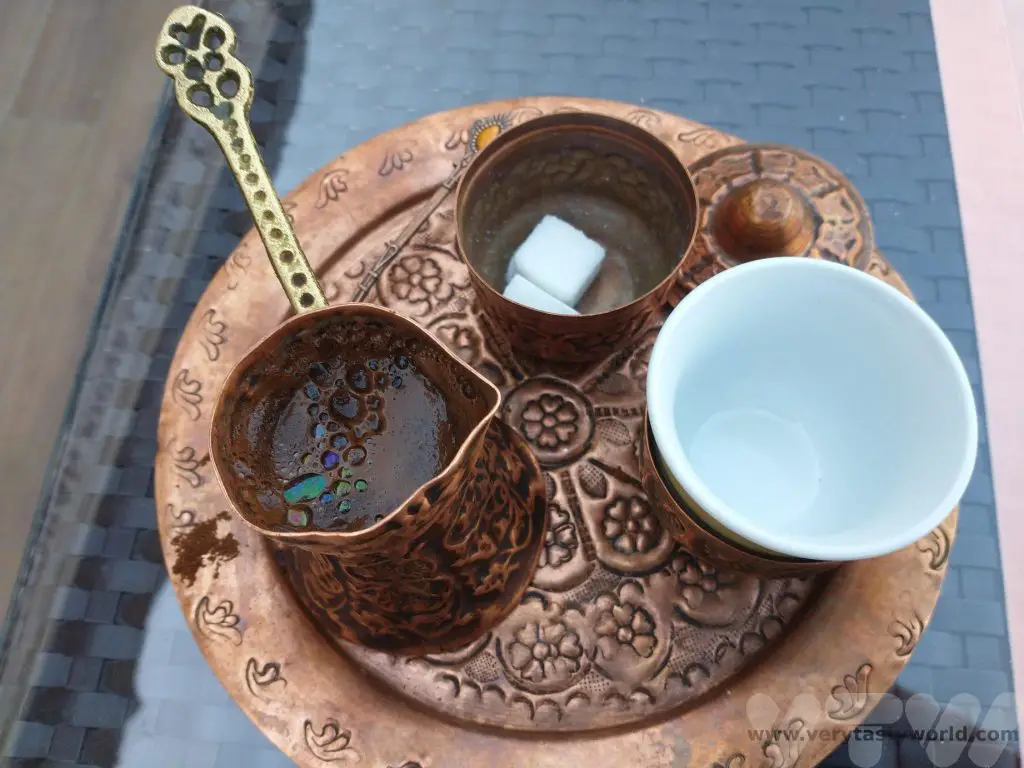
If you enjoy a tipple, it’s impossible to visit Bosnia without tying domace rakija – homemade brandy. It is made from fermented fruits which are distilled. The more common fruits that form the base of the rakija are grapes and plums but other fruits such as pears, cherries and raspberries are used as well. Some of the more unusual flavours are honey, quince and walnut.
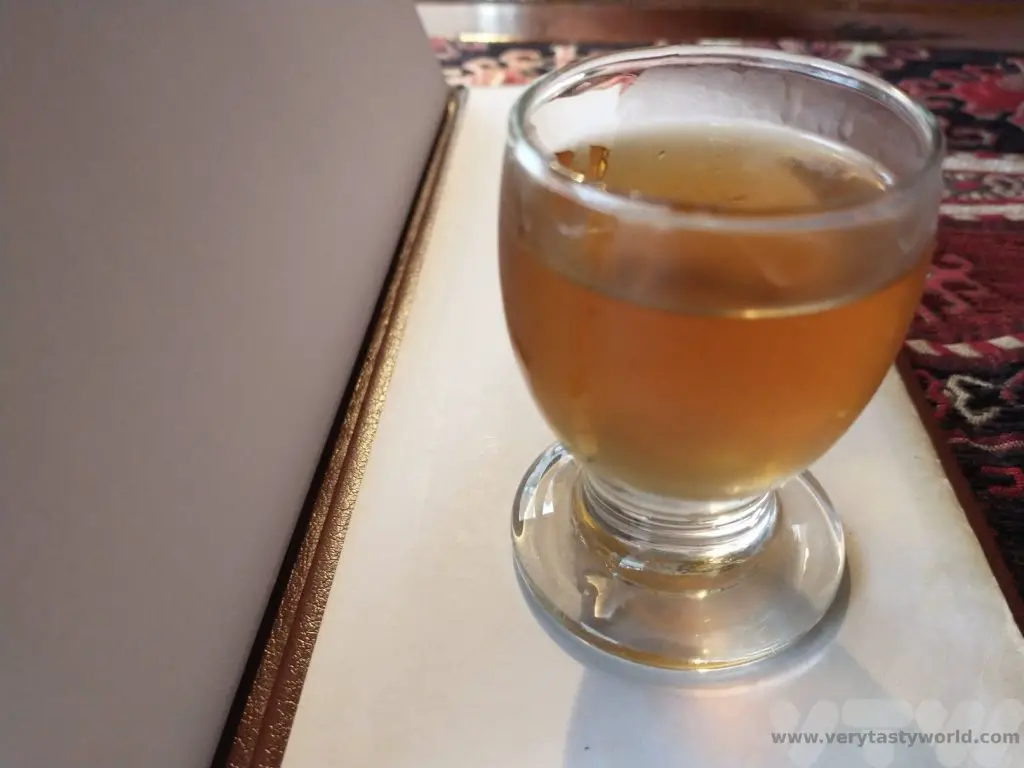
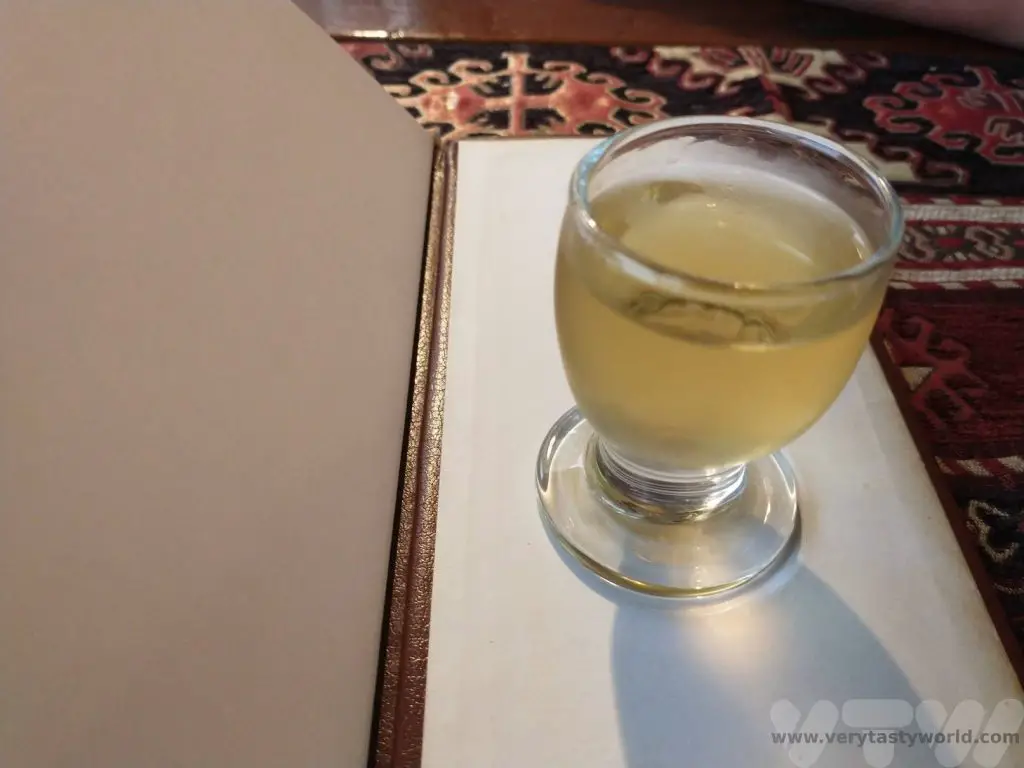
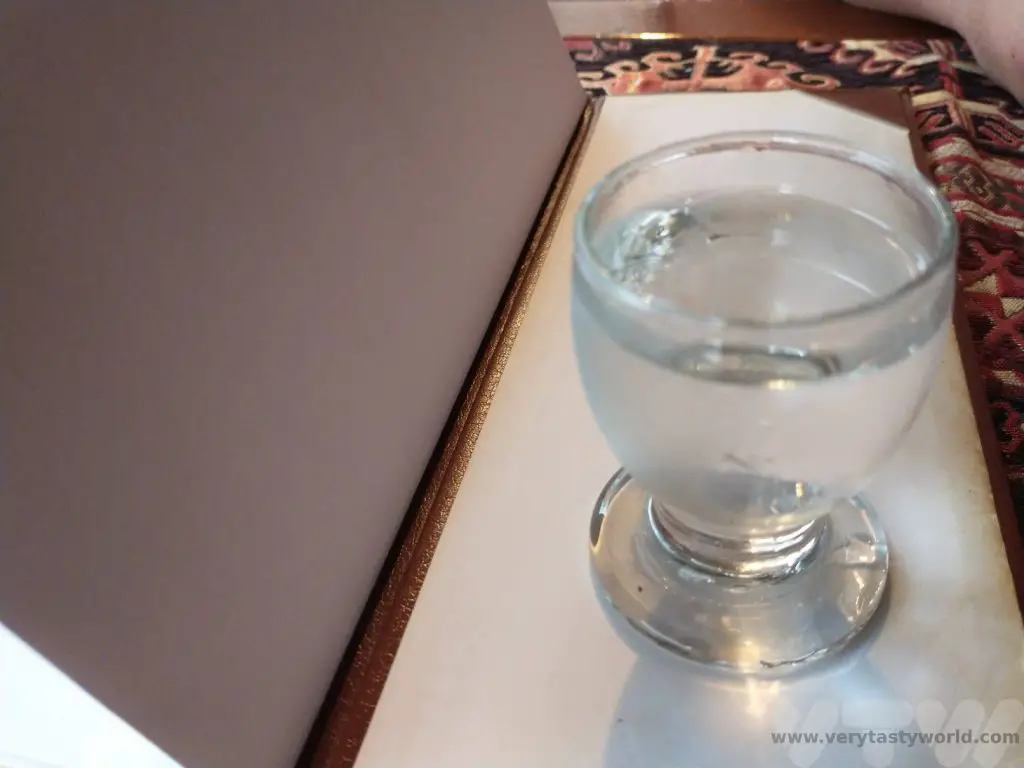
Related Posts You May Enjoy

- Things To Do In Rovaniemi In Winter
- Avebury Stone Circle vs Stonehenge
- Five days in Copenhagen
- Is Sarajevo Worth Visiting?
- A Svalbard Holiday – Land of the Midday Moon
- Afternoon Tea in Coventry

- RECIPE: How To Make Elderflower Champagne
- RECIPE Oyakodon Donburi
- Zero Waste Recipes Before Your Holiday
- RECIPE: Vegetable Biryani Tamil Nadu Style
- RECIPE: Vegan Wild Garlic Pesto
- Recipe: Venetian Pasta Sauce
- RECIPE: Biryani Raita Recipe
- RECIPE: How to Make Costa Rica’s Gallo Pinto
- Recipe: Japanese Simmered Pork Belly – Buta no Kakuni
1 Day in Mostar, Bosnia and Herzegovina
We have recently returned from a holiday travelling through Croatia and Bosnia Herzegovina, two countries that we have long wanted to visit. We decided to take a fly-drive trip, flying in and then hiring a car so that we could have flexibility touring through these two beautiful countries. We spent 1 day in Mostar exploring this beautiful city with its iconic bridge.
Driving in Bosnia and Croatia
We flew into Dubrovnik in Croatia (as that worked best for our flights from the UK) and then hired a car at the airport. It’s always worth pre-booking the hire car. Driving in both countries is pretty easy – the roads are generally good (they are better in Croatia which has a more established tourism infrastructure) and, even better, usually free of traffic. Due to the mountainous nature of region dual carriageways were rare and the drives were leisurely but the scenery throughout each drive was spectacular. We kept to the speed limit – and be aware that there are speed cameras, particularly close to schools in towns – but were overtaken on quite a few occasions.
An ordinary driving licence was fine for driving in Croatia but we needed to obtain an International Driving Permit (1968 version, available from Post Offices in the UK for £5.50) in order to drive in Bosnia Herzegovina. It was also important to ensure that the car hire company provided the car’s registration and insurance paperwork as we could have been asked to show it to police or customs officials at any time, particularly in Bosnia.
Border crossings were generally easy – we just needed to join the queue for cars and simply hand over our passports at the first check-in booth and then answer any questions as the next one, the customs booth. In Bosnia Herzegovina proof of Covid vaccination was needed (at the time of travelling). We had printed our Covid passes out so they were easily to hand but a mobile phone app would have been just as good. Our itinerary took us in and out of both countries. After an overnight stay in Mali Ston we headed into Bosnia Herzegovina.
Bosnia and Herzegovina’s History
Bosnia Herzegovina has a long and complex history. Its location in the Balkans is often described as the crossroads between south and south-east Europe. Populated by south Slavic people it was annexed into the Ottoman Empire, who brought Islam to the area, in the middle of the 15th century. Hence the population comprises Serb (Orthodox Christians), Croat (Catholic) and Bosniak (Muslim) peoples. This is reflected in the multitude of churches and mosques that can be seen throughout the region.
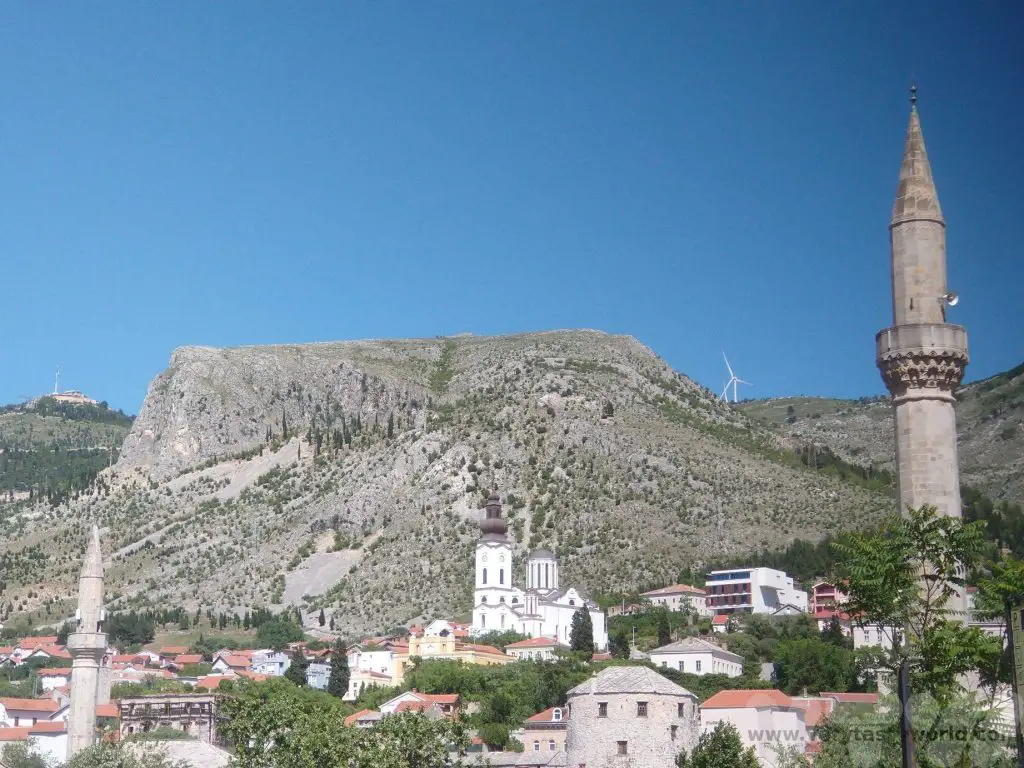
Mostar is the main (in fact, the only) city in Herzegovina. (The northern region of the country is Bosnia, with Sarajevo as its capital, and Herzegovina is the south.) Mostar is located on the Neretva river, surely one of the world’s most beautiful rivers, with its crystal clear turquoise water. The city is most famous for the Stari Most bridge that crosses the river. It was commissioned by Suleiman the Magnificent in 1557 and completed somewhere between 1566 and 1567.
It was the widest constructed arch in the world at the time at 30 metres long and 4 metres wide. The drop to the water is around 20 metres depending on the river level. The Ottomans were clever in that this was the only bridge spanning the river for several centuries – the word Mostar derives from ‘mostari’ – bridge keepers – so that the authorities could impose tolls on the traders who needed to cross as they moved their goods through the region. The bridge is flanked by two impressive towers.
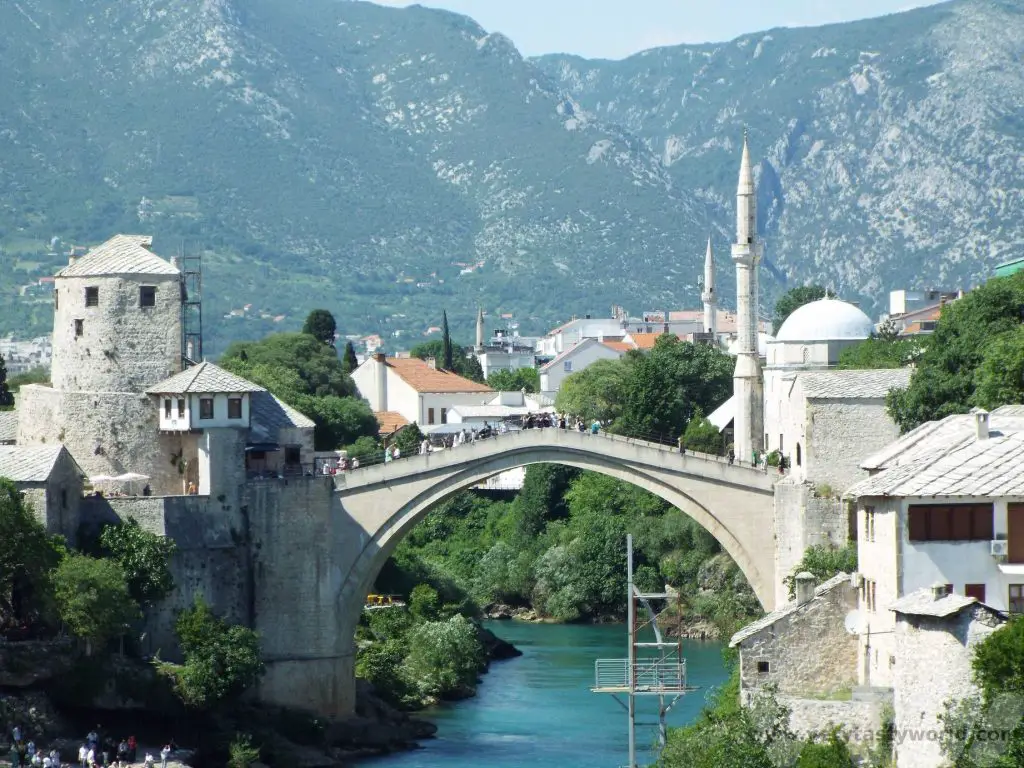
Following the decline of the Ottoman Empire and then the annexation of Bosnia Herzegovina by the Austro-Hungarian Empire in 1909, the Kingdom of Yugoslavia was established in 1929 after World War 1. This became the Socialist Federal Republic of Yugoslavia, under the rule of Josip Broz Tito, following World War 2. The region remained stable until the breakup of Yugoslavia in the early 1990s. Following Slovenia and Croatia’s respective secessions from Yugoslavia, Bosnia Herzegovina held an independence referendum in February 1992. The outcome was in favour but, while most Bosnian Croats and Muslim Bosniaks had voted, the referendum had been boycotted most of the Bosnian Serbs, a significant proportion of the population. A series of events following this led to war breaking out between the different groups. It lasted until December 1995.
It is incredibly difficult to summarise – let alone truly understand – the complexities of the war but what is undeniable is how horrific it was. This was a war that happened during our lifetime – we remember from seeing news reports on the television at the time. We spoke to a number of local people – from all ethnicities – during our time in Bosnia Herzegovina and they told us about their experiences living through the war, notably the Siege of Sarajevo. Following the peace declaration, the government structure in Bosnia Herzegovina has become incredibly complex with representatives from each ethnic group holding positions of power. For example, the country has three presidents: a Bosniak, a Serb, and a Croat.
One of the consequences of the war for Mostar was the destruction of the Stari Most bridge in December 1993. It was not only considered to be a strategic bridge (the other bridges crossing the river in Mostar were also destroyed) but also a cultural icon. The bridge was rebuilt after the war using funding from a variety of sources and many different countries contributed to the fund. The aim was to reconstruct the bridge in identical style and using similar materials (some salvaged from the original bridge where possible). It was reopened in 2004.
1 Day in Mostar – A Walking Tour
When visiting a new city, particularly when we are touring and short on time, we enjoy taking a walking tour. There are usually lots of options available but we especially like the ‘free tours’ which are run by local guides (who will expect a tip at the end of the tour and absolutely deserve one) who can show you the main places to visit in Mostar, explain the history of the area and give some personal insight into the country. They are also the perfect people to recommend local food and restaurants.
We started at the Spanish Gymnasium, which is the first public school in Mostar (the word derives from the European term for high school rather than being an exercise centre). It’s about a 20 minute walk from the centre of the city and is a good meeting point as its orange colour is very easy to spot. It is a working school so entering the building isn’t possible.
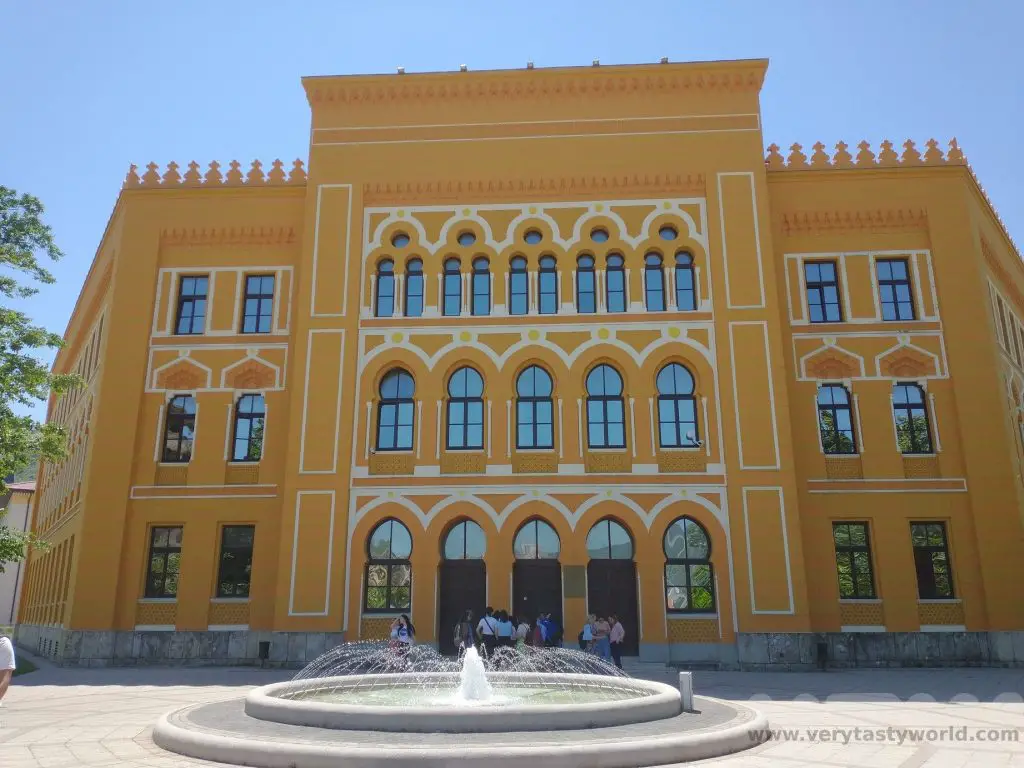
The gymnasium is located next to the Zrinjevac City Park, which is a pretty park that has a rather unusual statue. We really weren’t expecting to see a life-sized (well, apparently it’s 4cm short of life-sized) statue of Bruce Lee. Apparently he was chosen as a symbol of diversity and couldn’t be perceived to have an affiliation with any of the local ethnicities, but rather represented “loyalty, skill, friendship and justice.”
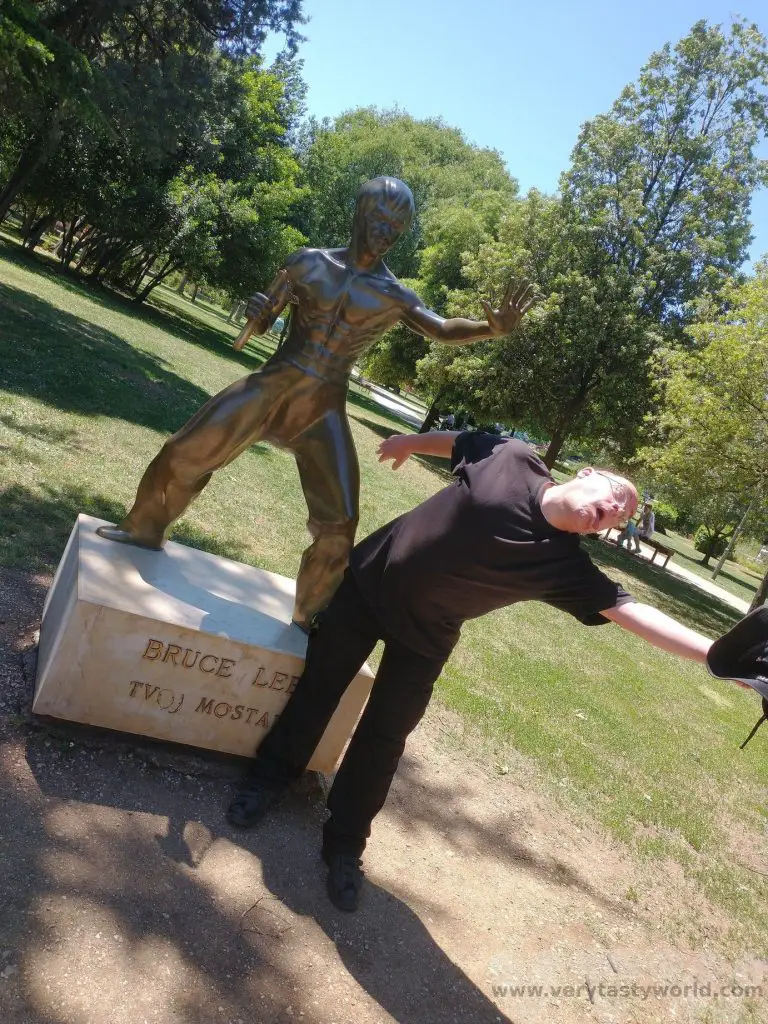
When walking around Mostar the scars of the war remain. We walked through the former financial district – many of the buildings are still shells. Our guide explained that while reconstruction work had taken place following the war, the capital Sarajevo had received more money to rebuild. There was still a lot of work that needed to be undertaken throughout Bosnia and Herzegovina.
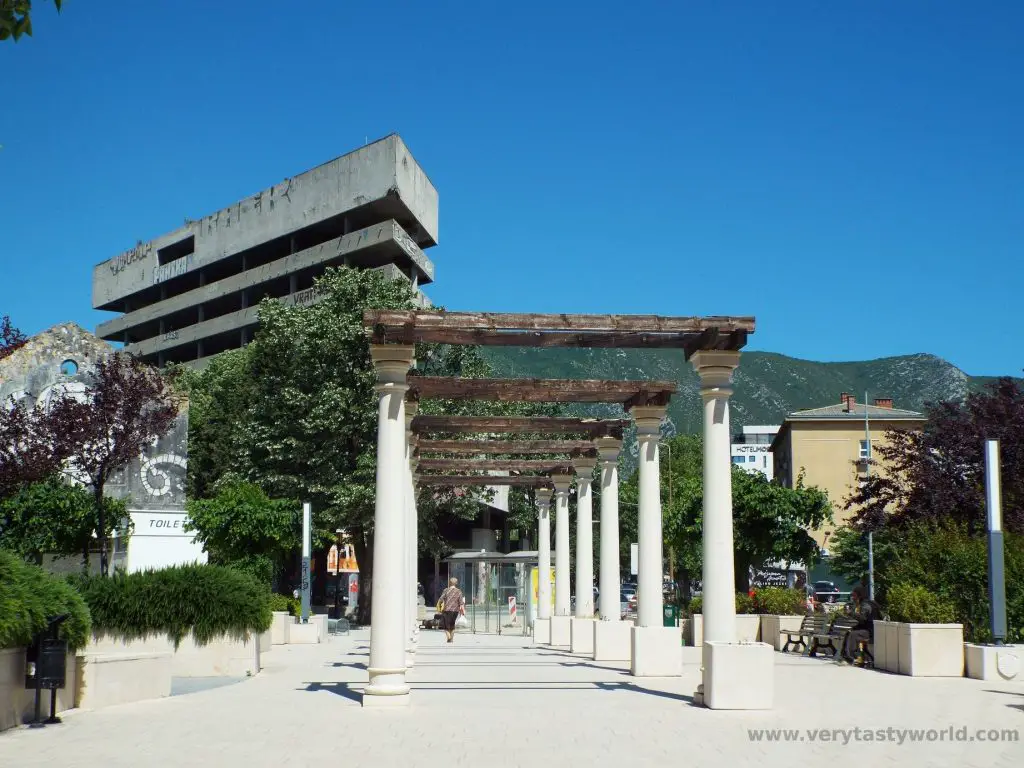
Walking across the Most Musula bridge we could see good views to the hills above. Although walking up to the summit would ensure a magnificent panorama of the city, the area sadly still contains land-mines.
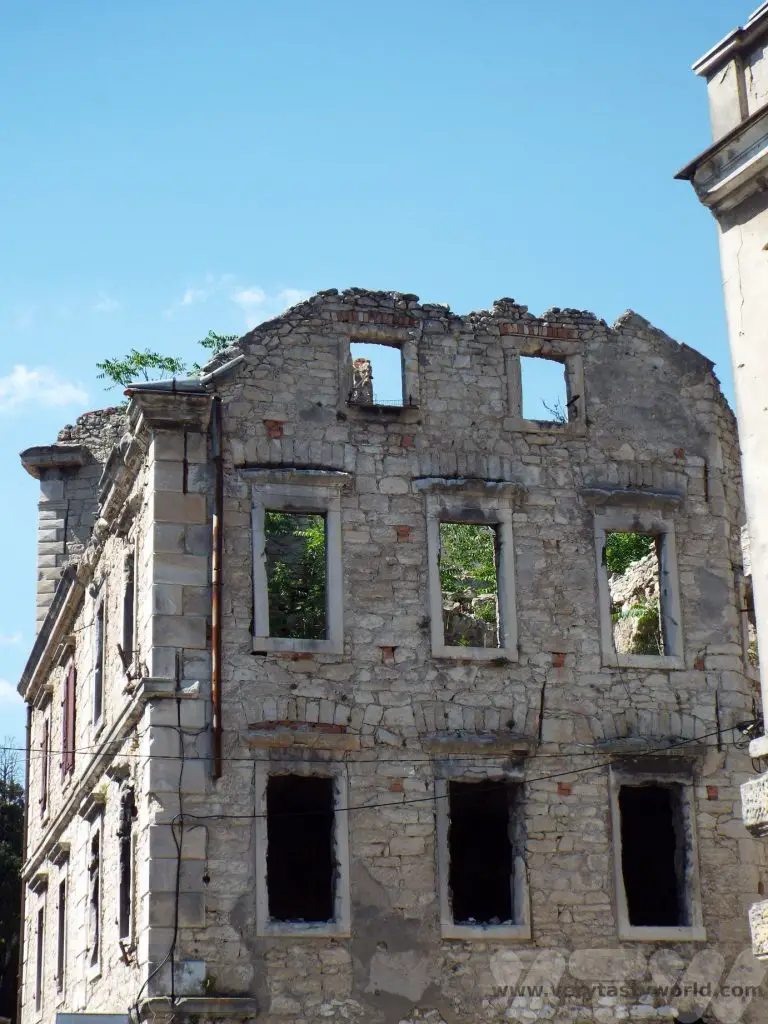
We then headed towards the older part of the city. The Karadoz Bey Mosque is one of the largest mosques in the region and dates from the same year as the Stari Most bridge.
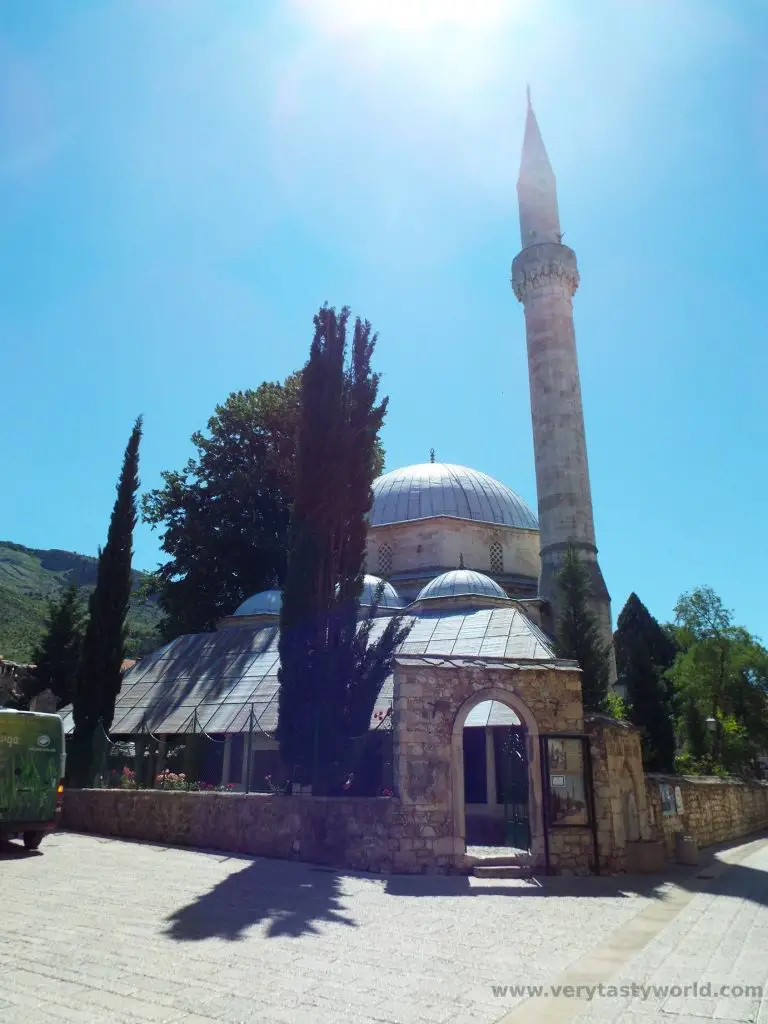
It is possible to visit the Koski Mehmed Pasha Mosque. It is located on a side street just away from the main street.
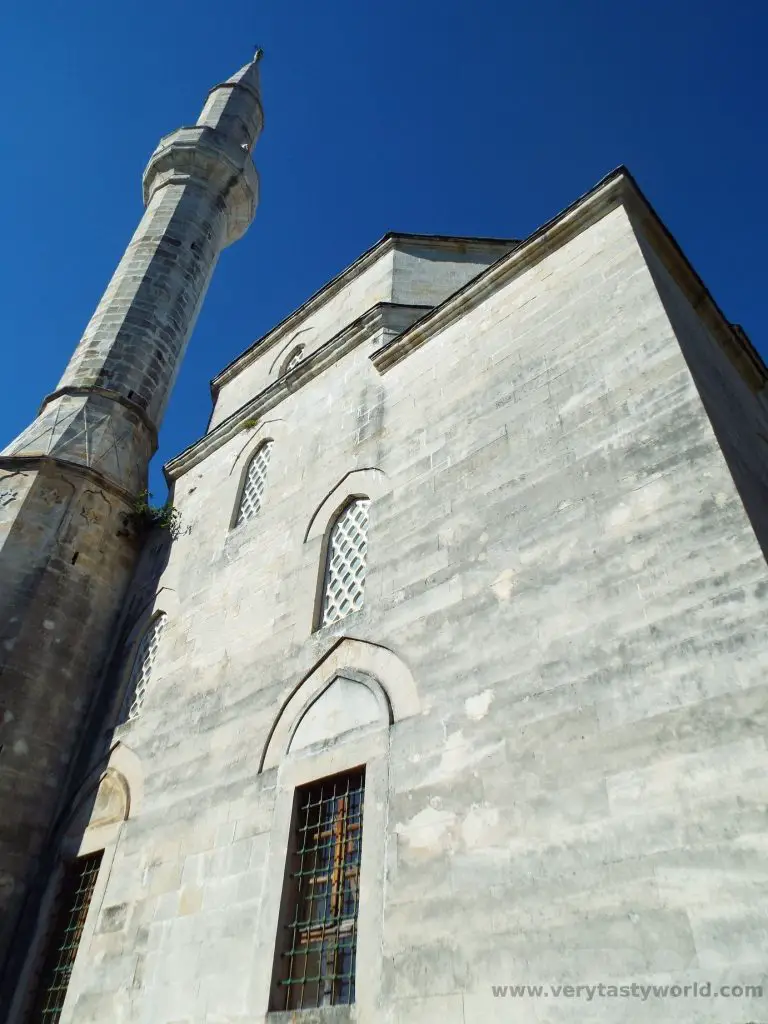
Outside is a fountain traditionally used for washing before entering the mosque to pray.

For visitors it costs 4 Euros to enter the mosque and a further 4 Euros to climb the minaret. Photos were allowed and, although we asked if they would like us to remove our shoes and cover our heads, we were told that it wasn’t necessary.
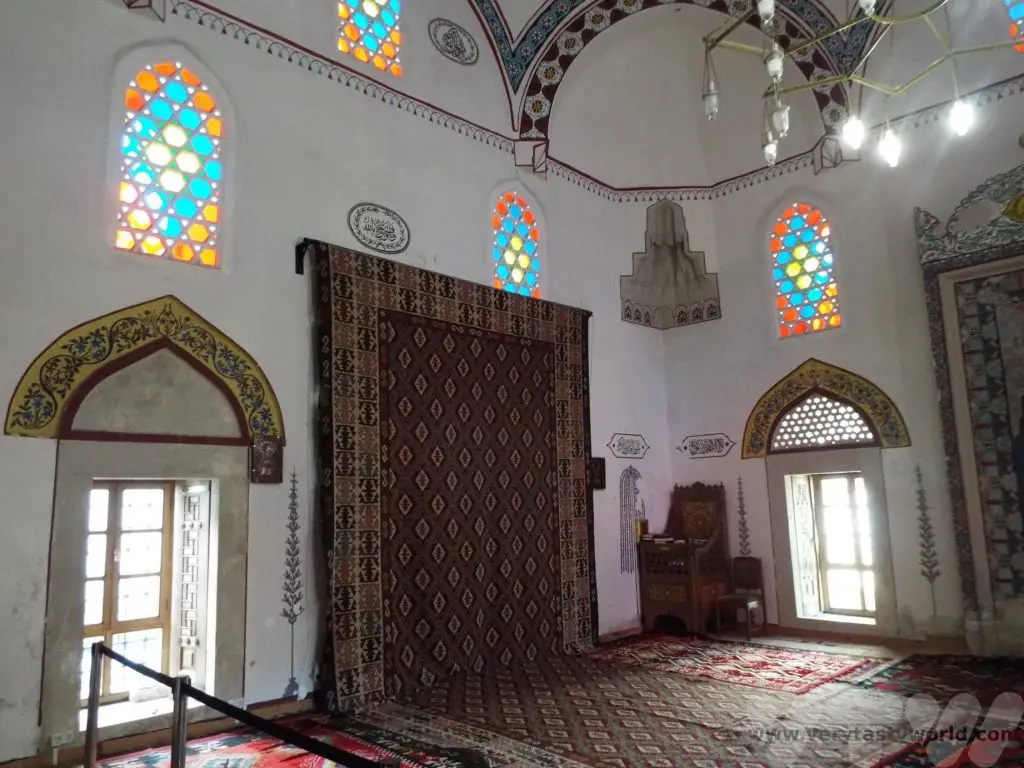
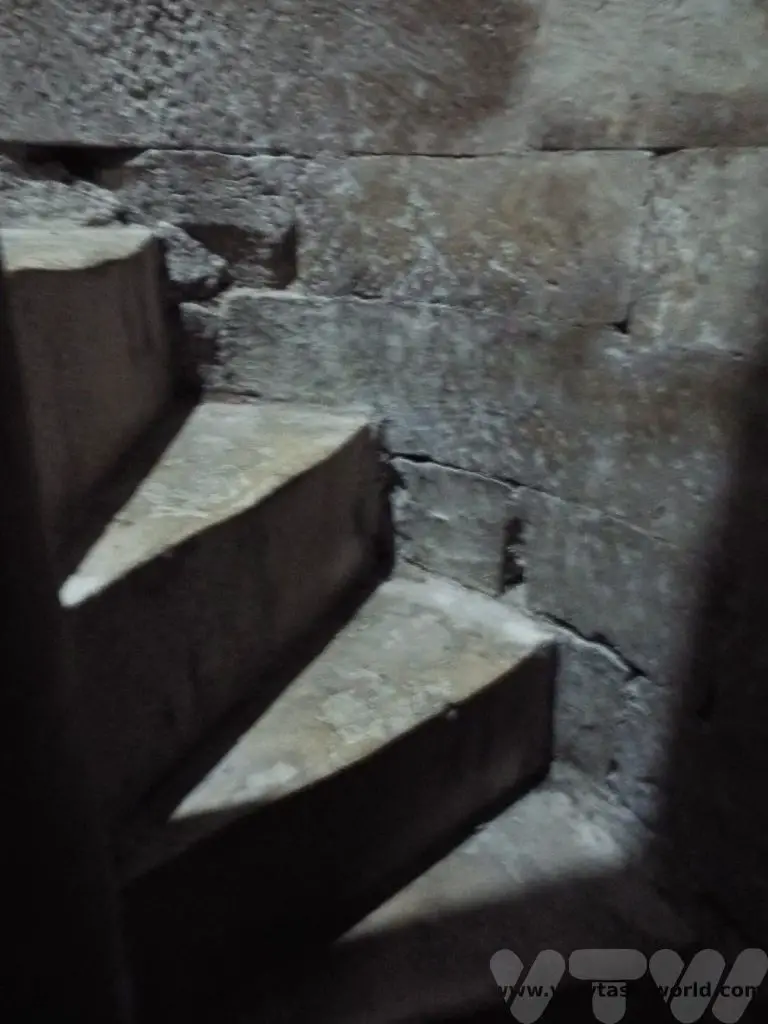
The interior of the mosque itself is quite compact and the climb to the top of the minaret was fairly claustrophobic.
However the view across the river to the bridge was spectacular. The balcony of the minaret was pretty narrow so we were lucky that there was only one other visitor there. You can also enter the small garden adjacent to the mosque for more river views.
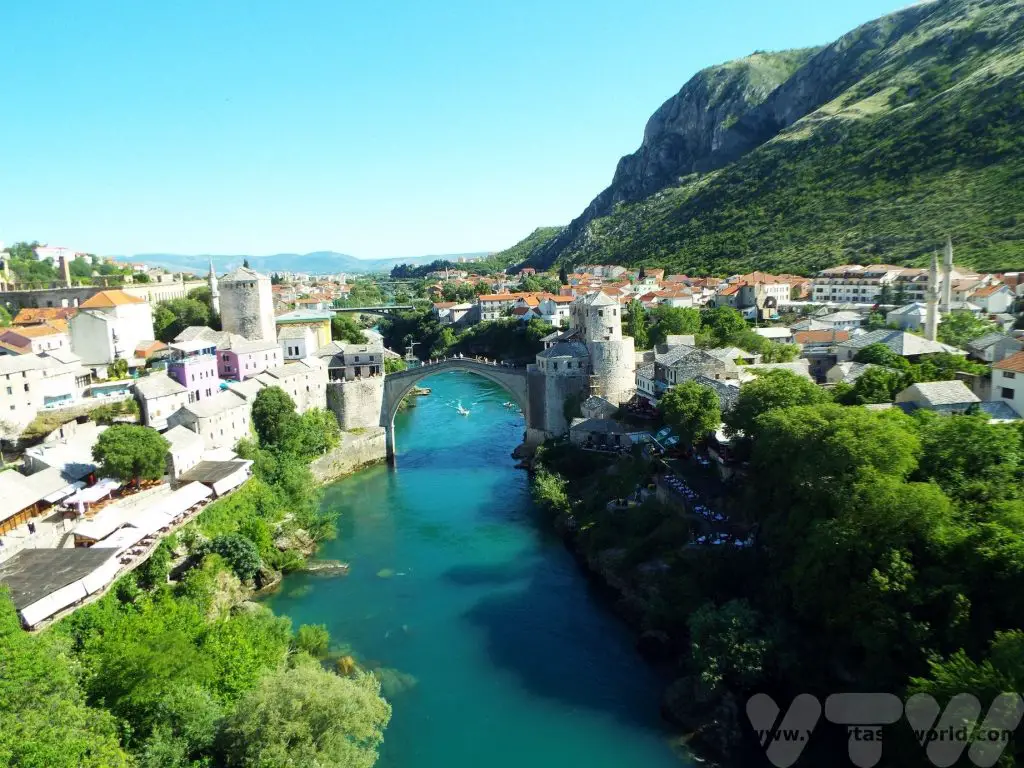
Wandering through the old town, there are lots of shops and restaurants. It is very touristy and can get crowded during the day. There are also a couple of museums in this area, The Museum of War and Genocide Victims 1992-1995 and also the Bridge Museum, which we were keen to visit, but sadly it was closed. There were reminders of the war as we walked through the streets.
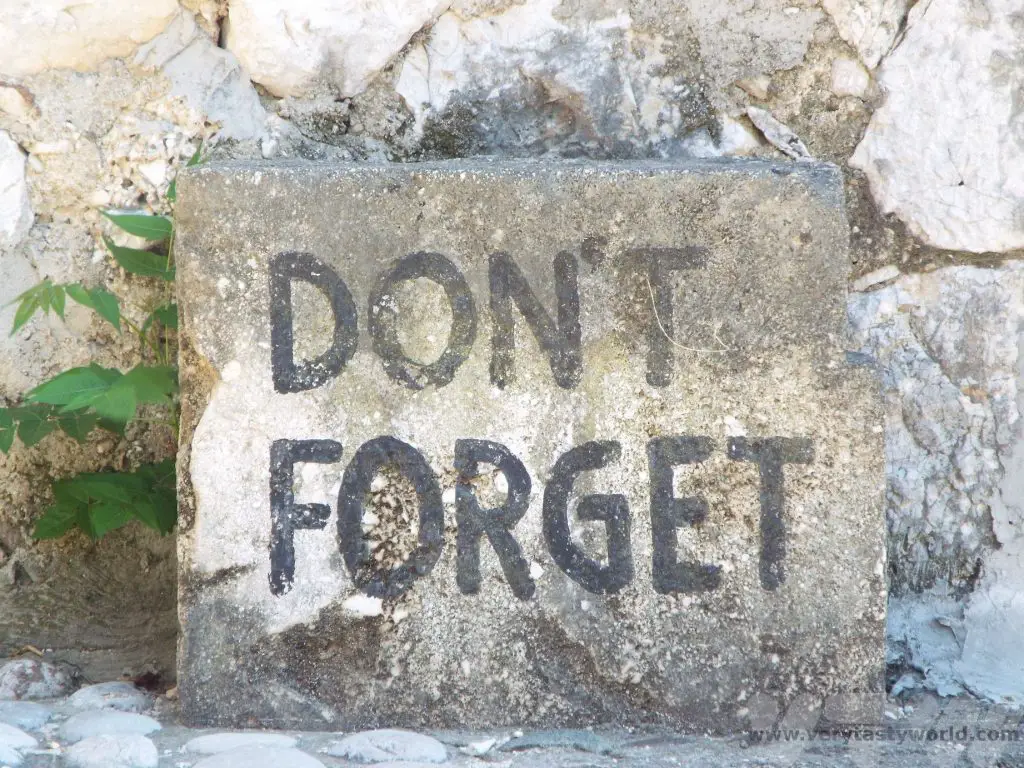
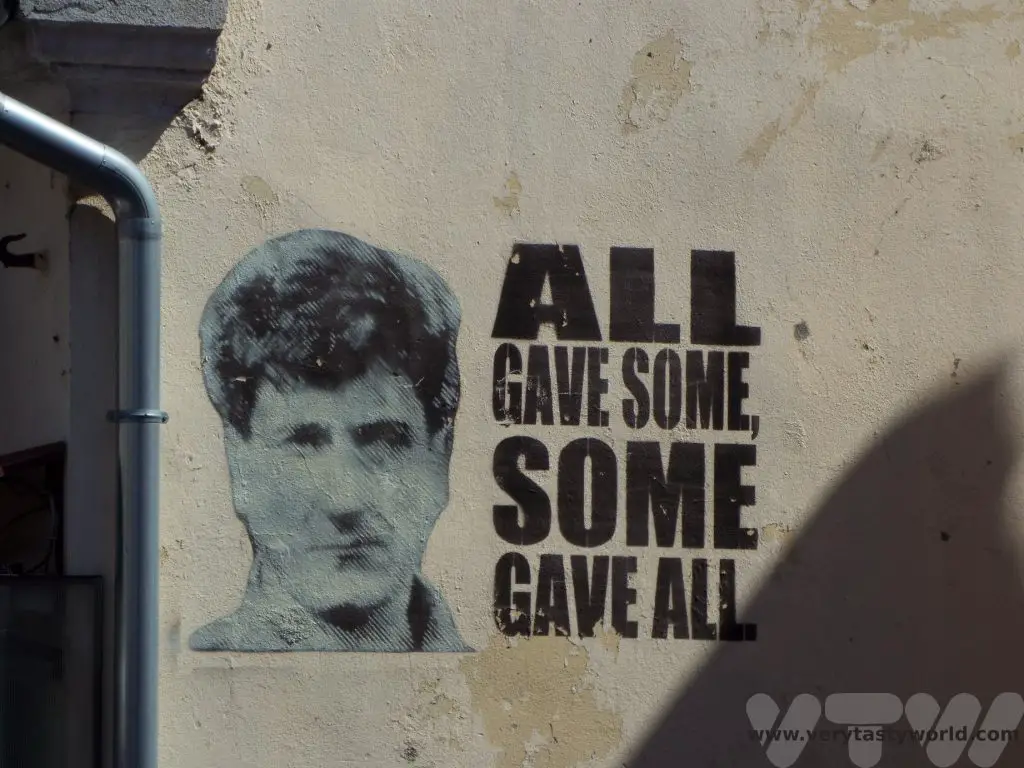
Approaching Stari Most again we crossed the river over the old bridge. The steps can be quite slippery.
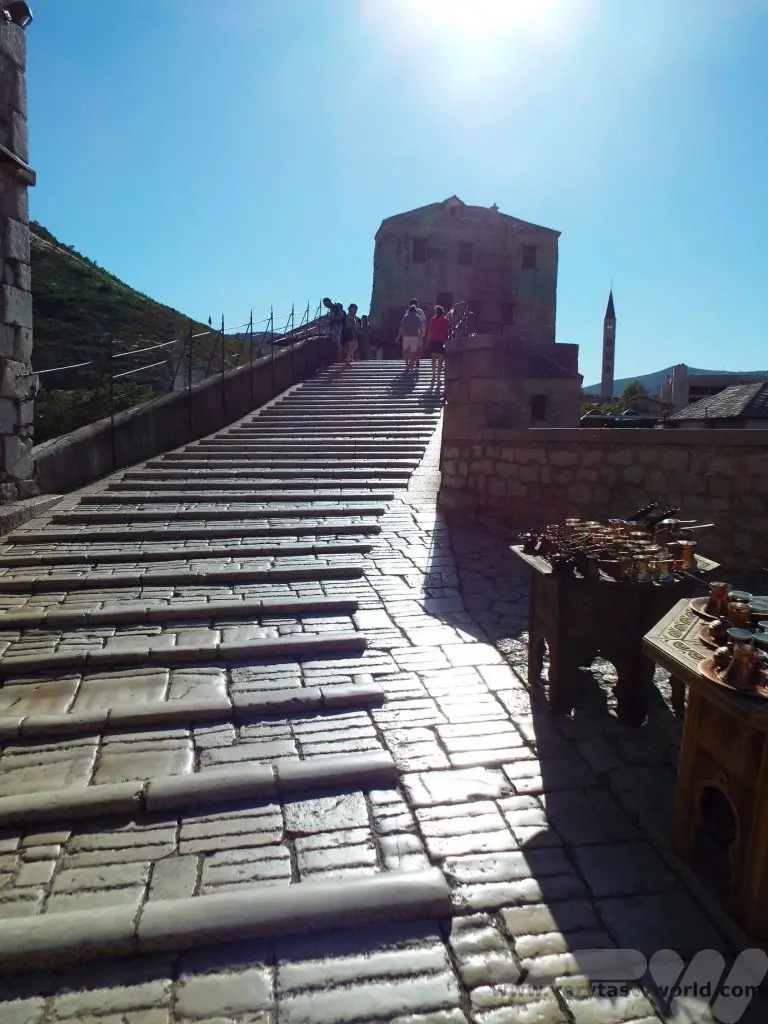
One thing that is very popular is watching locals who dive from the bridge into the crystal clear water below. You’ll see them hanging around at the top of the bridge, sitting on the top railing, and they will usually dive once they have raised enough money – normally in the region of 50 Euros – from tourists. You will be able to tell when they are ready to dive when either one of them dons a wetsuit or they start splashing themselves with cold water because the temperature of the river is extremely cold, especially in spring and early summer. We were some distance from the bridge, upriver, when we saw a diver preparing to go. Despite the camera being focussed and on full zoom, we only managed to capture the splash! There are diving competitions held in Mostar each year.
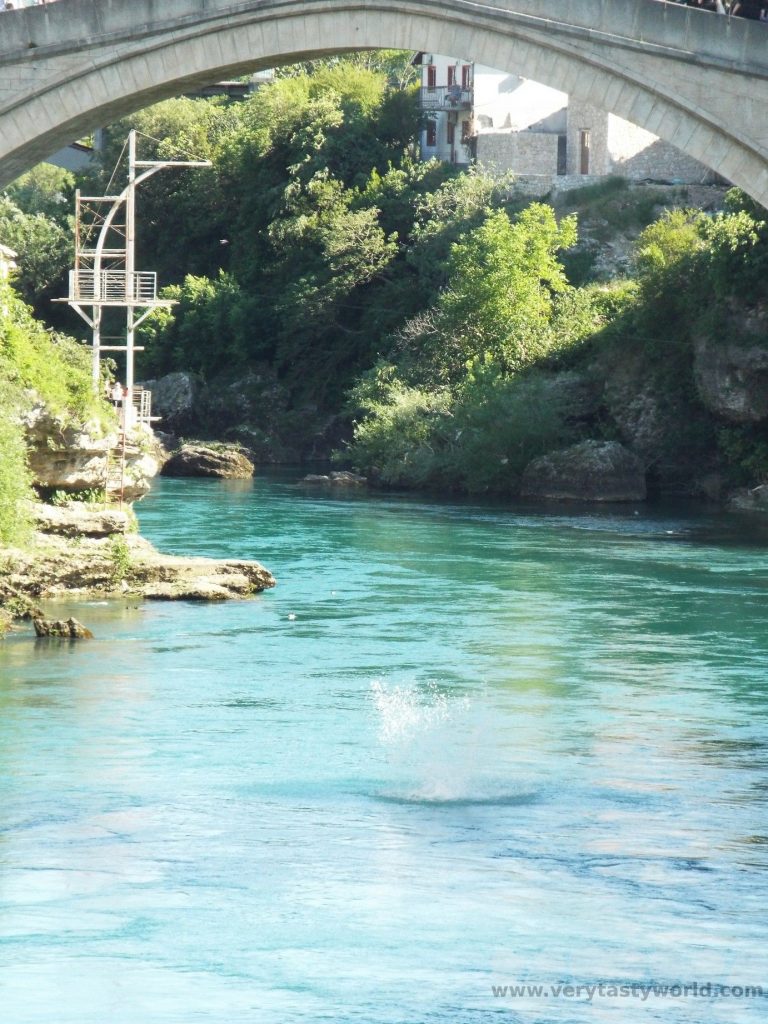
It’s worth noting that the bridge is a focal point for tourists and, because the city is only a couple of hours’ drive away from Croatia, it gets very busy during the late morning and afternoon as day trippers arrive in their coachloads. The surrounding streets and bazaars will be teeming with people. So staying overnight to explore the area and view the bridge when it’s less busy is definitely recommended.
Our walking tour concluded by another stone bridge – the Crooked Bridge – just a five minute walk away from Stari Most. It dates from 1558. It was strategically important because it allowed traffic to be controlled from the towers of the old bridge. This, too, is a reconstruction – sadly the original was destroyed during floods in 1999, but it was rebuilt in 2002.
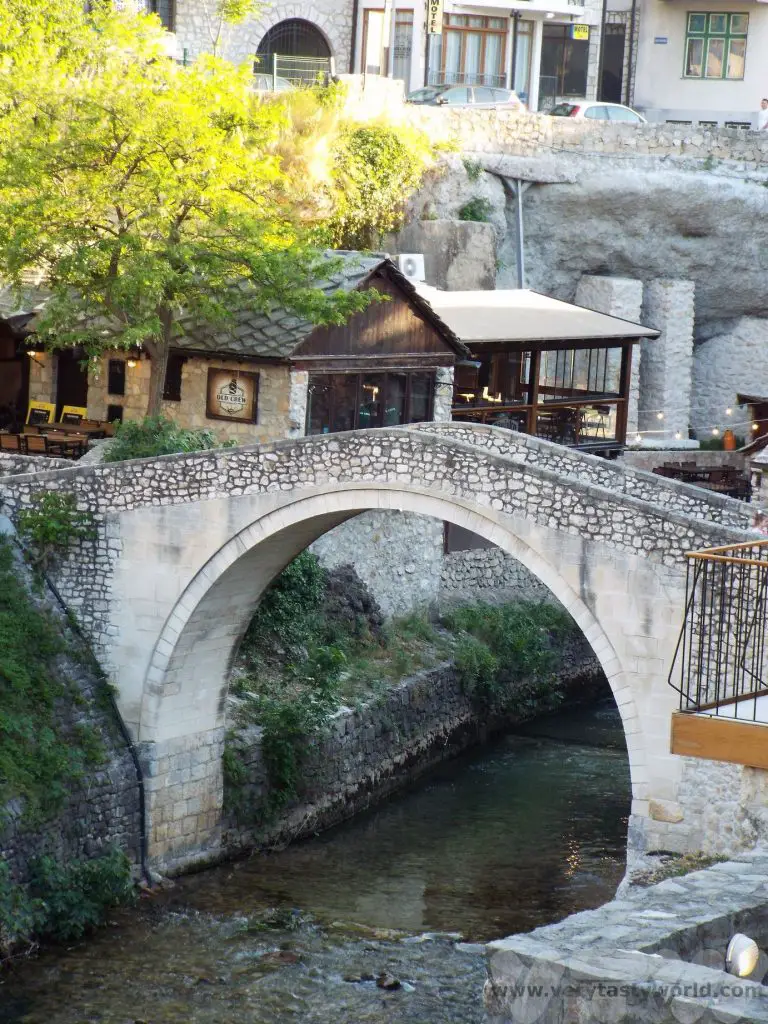
Dining Out in Mostar
There are loads of eateries offering tasty food in Mostar. The restaurants closest to the bridge, or those with a good view of it, are likely to be more expensive than those in the surrounding streets. Mostar was our first introduction to Bosnian cuisine. The national dish is considered to be cevapi – little meaty sausages/kebabs served inside a bread called somun which is a flatbread like pitta but has a really nice focaccia-like spongey texture. It’s served with chopped raw onions, which are quite sweet in flavour rather than being too pungent. You usually get a choice of a small portion (5 little sausages) or larger portion (10 little sausages). Many of the dishes we tried in both Bosnia Herzegovina and Croatia were accompanied by ajvar, a condiment made from red peppers (it isn’t spicy).

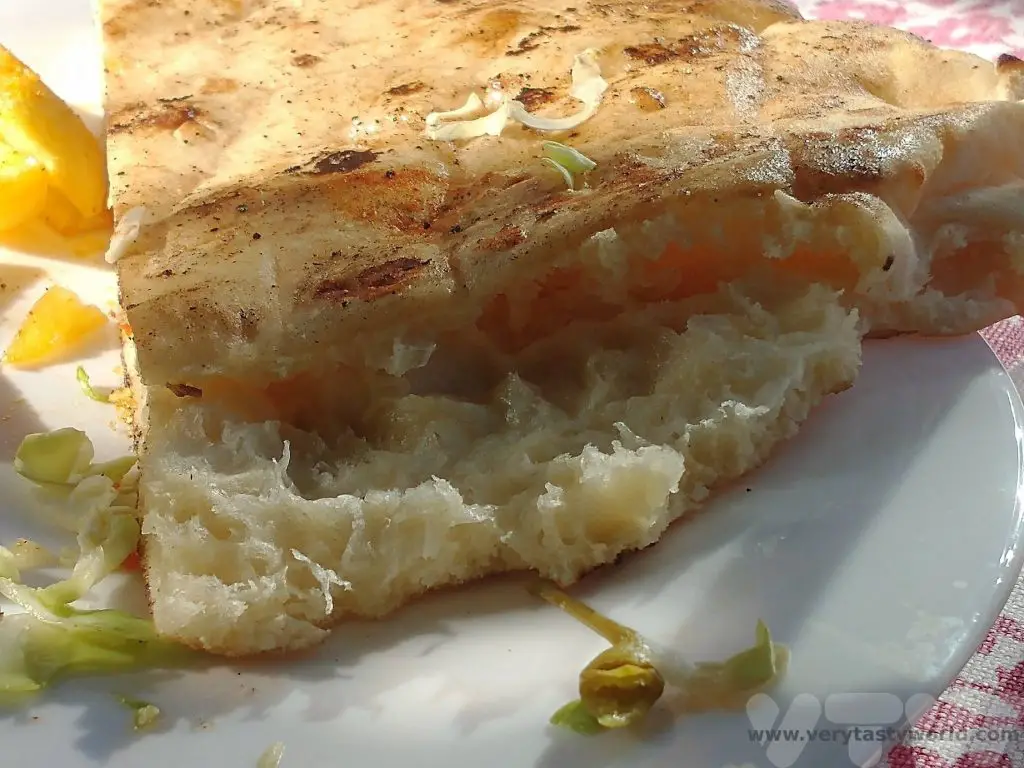
There are plenty of sweet dishes on offer as well. Baklava is a familiar dessert, a sweet, filo-based pastry, filled with layers of nuts and a sweet syrup, popular across the region and the Middle East. We particularly enjoyed hurmasica, a pastry doused in lemon-flavoured sugar syrup. It comes in an oblong shape and is very sweet but really delicious with a nice gooey cake-like texture.

And a meal wouldn’t be complete without a cup of incredibly strong, rich, sweet coffee. Coffee culture is very important in this part of the world.

There was also a very good craft beer emporium in Mostar,on Gojka Vukovica, close to the Crooked Bridge. It had a wide variety of local beers on offer, brewed in both Mostar and Sarajevo. We particularly enjoyed Marakuja, an American Pale Ale, Onano Maze, a rich porter, Darkness, a dry Irish Stout and Kukambera, a cucumber-infused lager which was really refreshing on a hot spring day.
And if you’re after something stronger, rakija is the local brandy made from fermented fruit. Its alcohol content can range from around 40% to 60%. It’s not uncommon for local people to make their own rakija. One of the guides we met told us that it was the cure for all ailments! What’s nice about it is that, even though the alcohol content is strong, you don’t just get a blast of booze, the flavours of the base fruit really do come through – it’s a pleasant tipple.
After dinner, when the day trippers have melted away, it’s lovely to wander through the city at night. The bridge and local buildings are lit up beautifully and Mostar becomes a much more peaceful place.
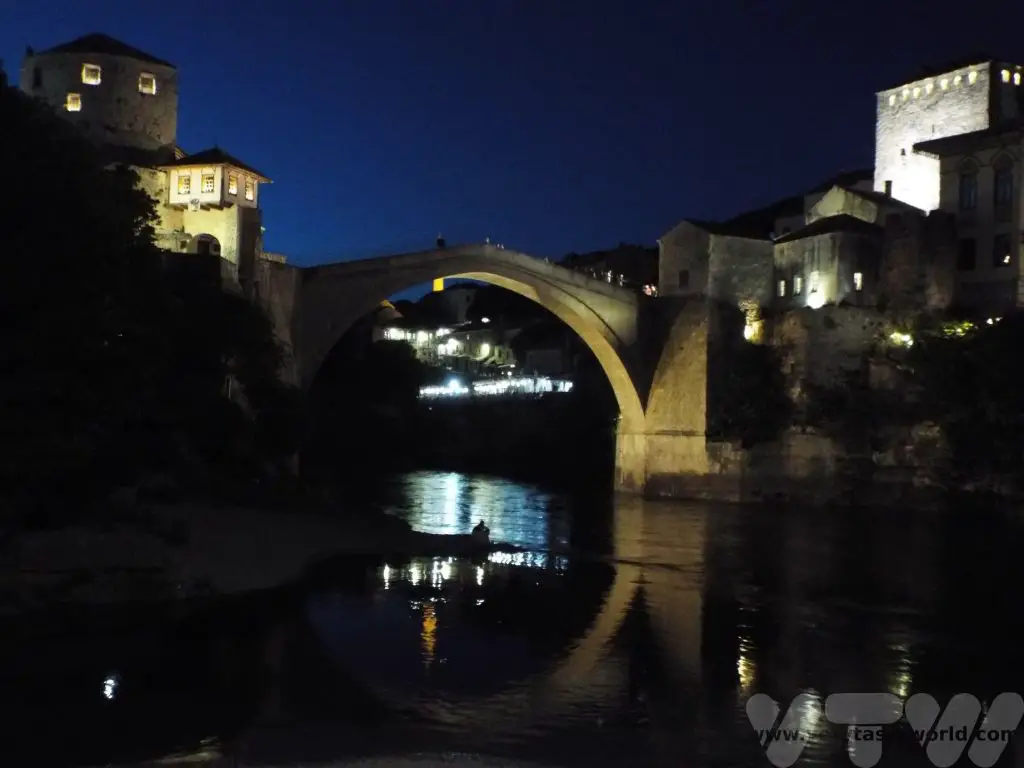
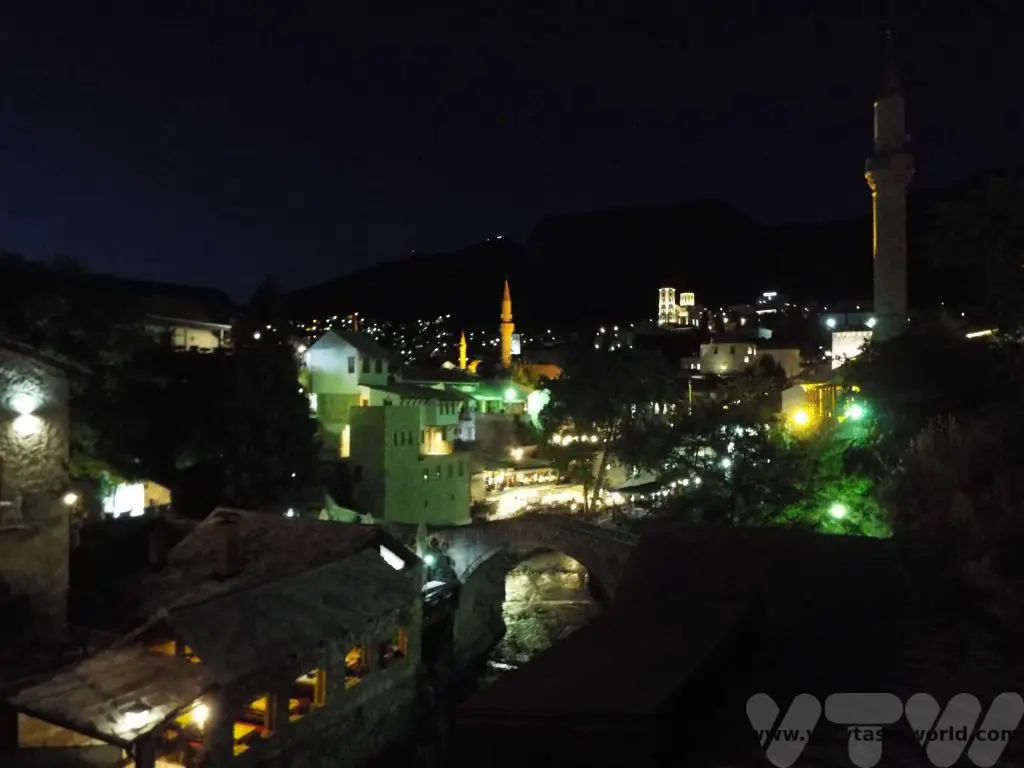
It is possible to see many sights in just one day in Mostar. We recommend staying overnight if you can, or at least waiting until the evening to see the iconic bridge beautifully lit up.
Related Posts You May Enjoy

